
1940 Alvis Arrival
This stunning 1940 Alvis has come in today for a new hood headlining as this one has had a run-in with his cats. The owner

Managing Director – Bridge Classic Cars

This stunning 1940 Alvis has come in today for a new hood headlining as this one has had a run-in with his cats. The owner
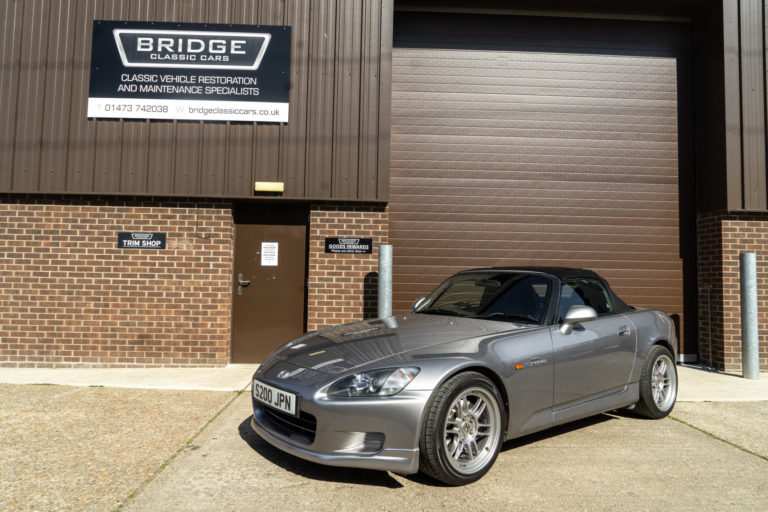
This 2000 Honda S2000 arrived today for some cosmetic TLC. With some paint chips and signs of rust, this little Honda just needs a small
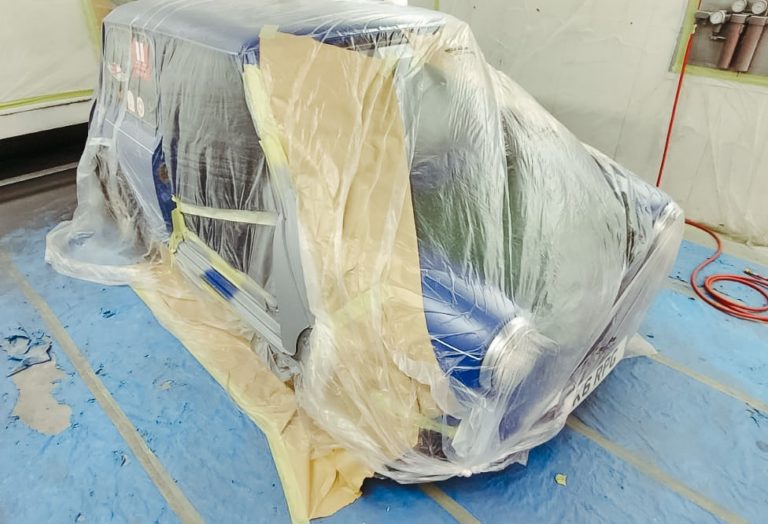
Our talented paint shop colour matched, masked up, primed and painted our 1993 Mini Rover side panels before it was sent back to Ted at

The trim shop has started on Craig’s 1987 Mercedes 500SL trim which is being done in a Claret red. Kath has been painstakingly pouring over
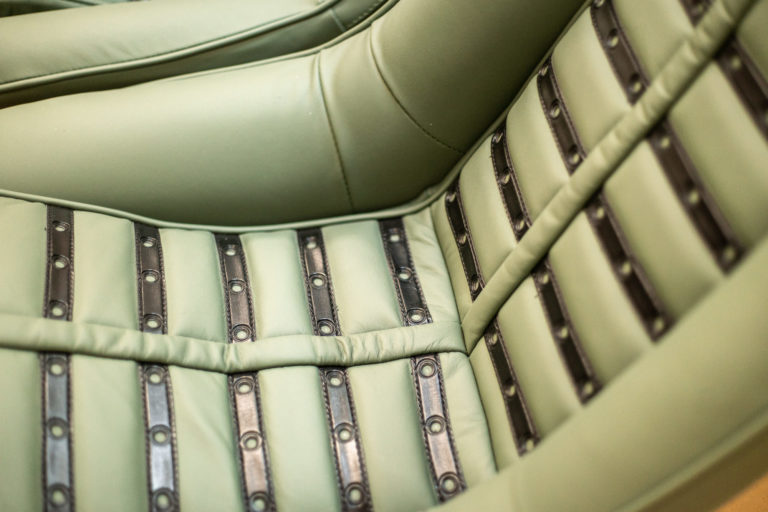
We thought we’d take a closer look at the finished Ferrari Daytona seats that the trim shop have made. Having had to make these all
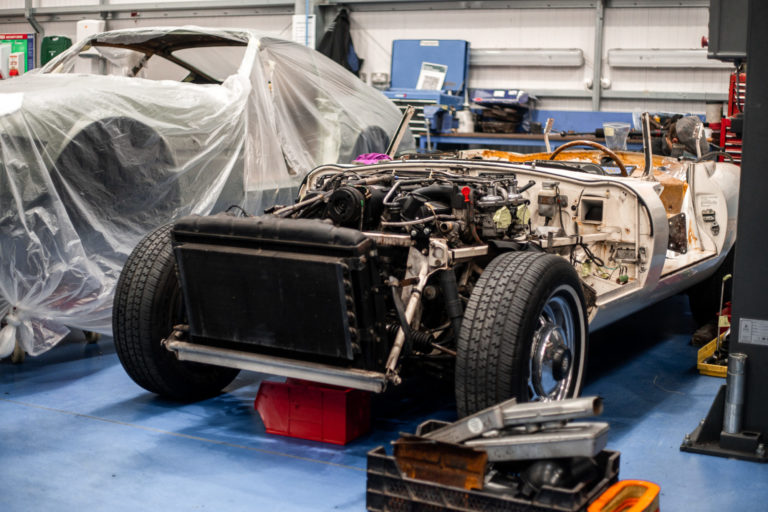
Scott has continued to dismantle our 1973 Beverly Hills Jaguar E-type Series 3 V12. He’s removed the bonnet, windscreen, top of the dashboard, heater box

Feature photo credit: Linda Hall

This rare 1955 Aston Martin DB2 / 4 Mark 1 arrived over the weekend and has come in for an assessment. Having been recently bought

Our 1991 VW T4 Transporter Campervan is road trip ready again and just in time for the summer! Its been thoroughly cleaned and painted and

Our 1973 Claret (Maroon) Triumph Stag has made its way into our workshop after waiting patiently in our hanger at Bentwaters. This Stag is in

Take a look into the history of this rare classic that arrived at our workshop today.
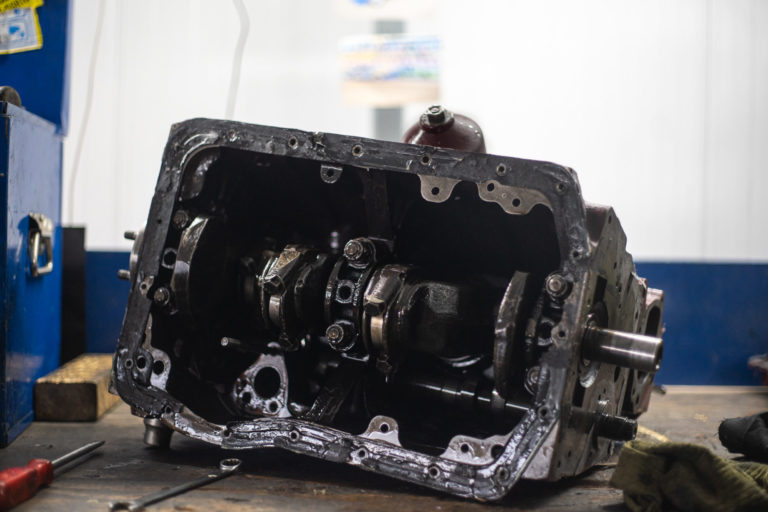
Ady has been taking apart the engine to try and understand the root cause of the engine troubles on our lovely 1960 MGA. He’s found

Our 1954 Jaguar MKVII has most recently been masked, primed and had a guide coat put over the top to guide Chris and Matt when
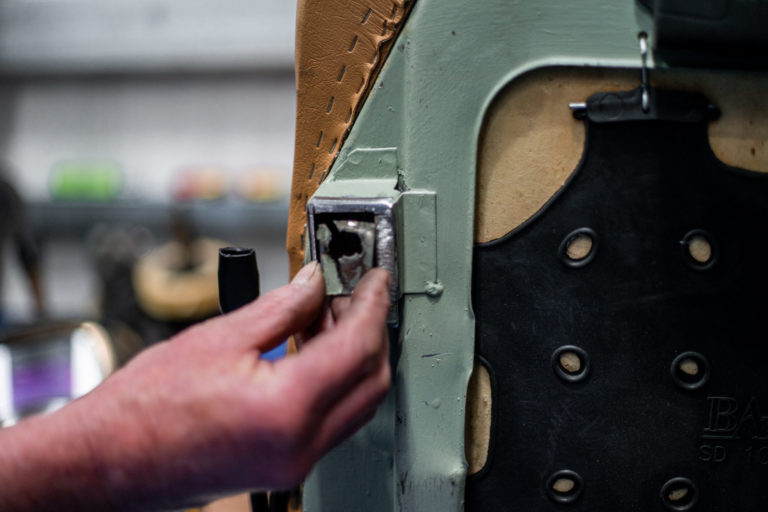
Our stunning green 1970 Series 2 4.2 had been completed and was in-fact on its way home with its owners when, just past the gate,
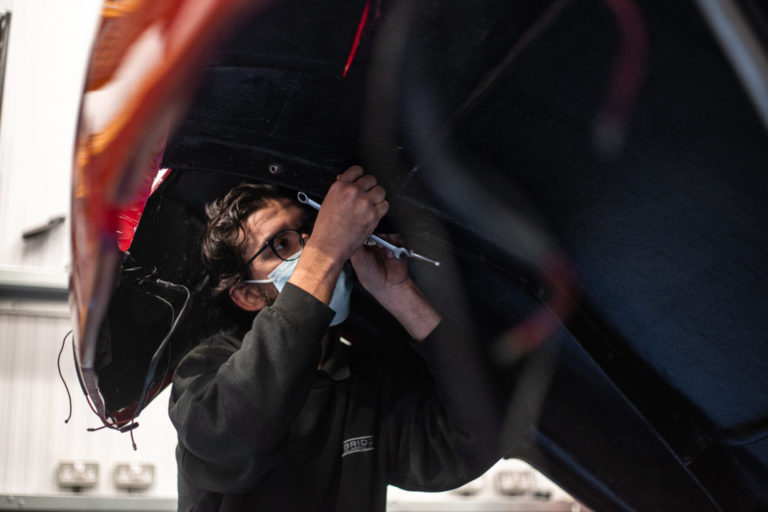
Paul and Tom have been working on the Peony Red Jensen 541R today, both fitting more chrome to the body and fixing in place the
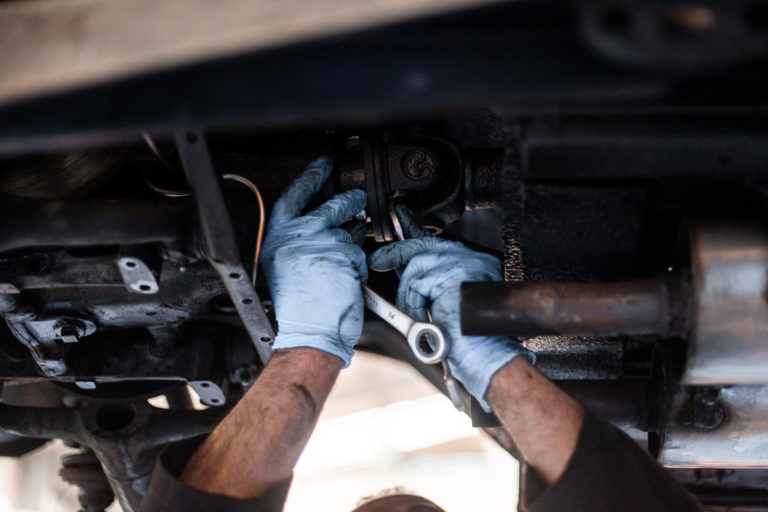
The rear axel has now been fitted back in our 1968 Jaguar E-Type Series 1.5. Mauro has been working to replace the seals and rebuild
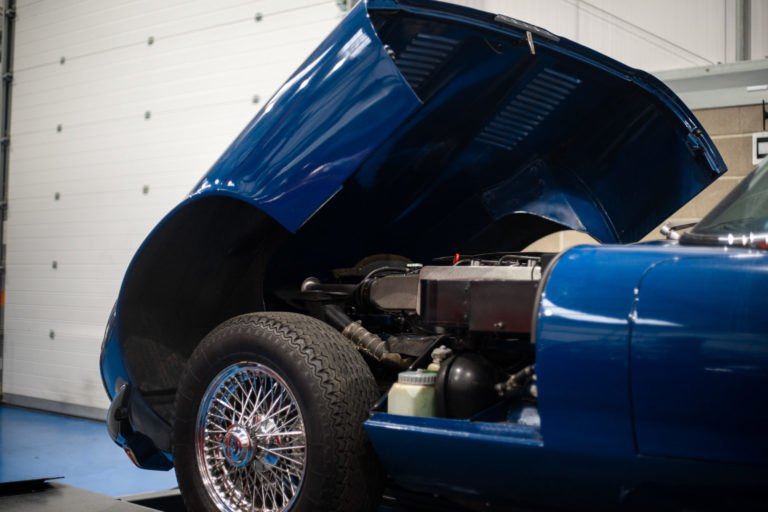
Our blue E-Type has had a new lightweight clutch and flywheel fitted after its old one was showing serious signs of wear and had become

Last night we hosted our live draw where we announced the winners of our Morris Minor and Triumph Stag, congratulations to Matthew and Gamal. It
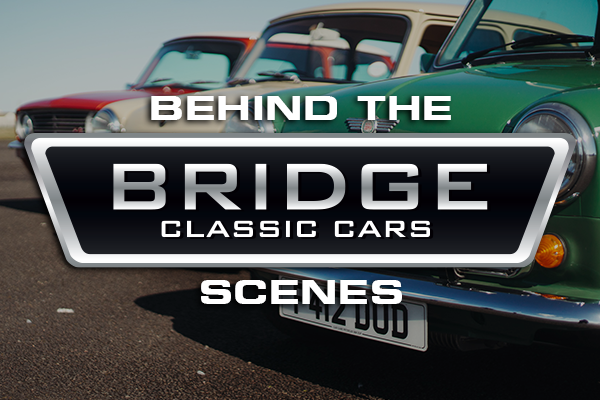
With all three minis individually shot, it only left the finale: Bridge Classic Cars does the Italian Job. Directed, shot and produced by our marketing

We took our 1996 Mini Cooper 1.3 over to Bentwaters for its photoshoot. We were lucky with the good weather and bright sun for our

We headed out to Bentwaters to shoot our classic 1969 Mini Deluxe, which is one of three of our most recent mini madness competition release.
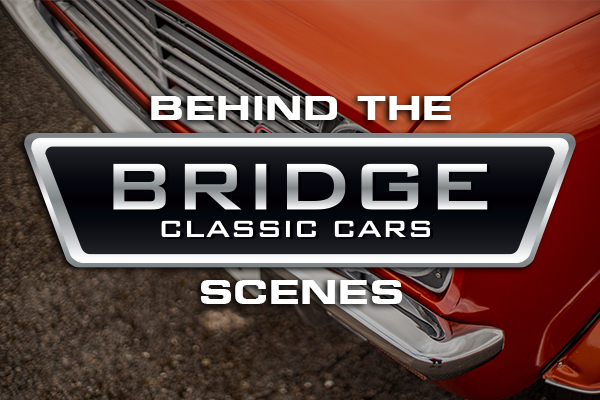
Last week we ventured out with our friend and model, Hannah, to shoot our 1980 Mini 1275 GT, which you now know is one of
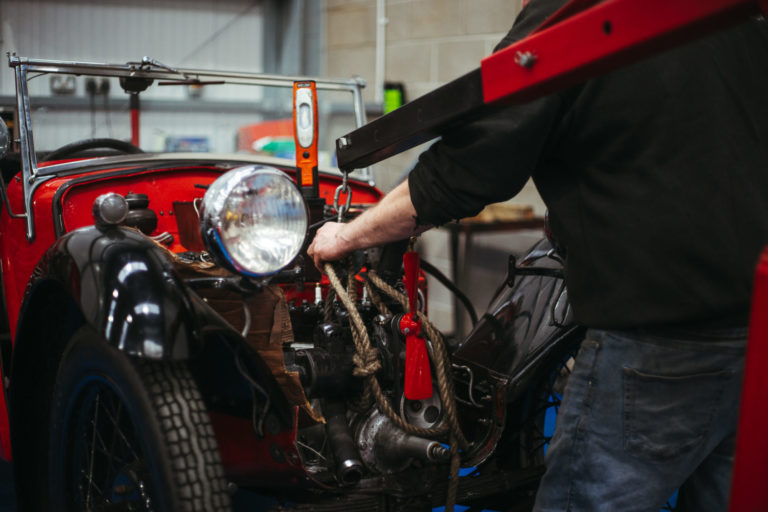
Our charming Austin Nippy has its engine back in which we’re delighted to see. Ady re-linked and re-fitted the engine back in to make sure
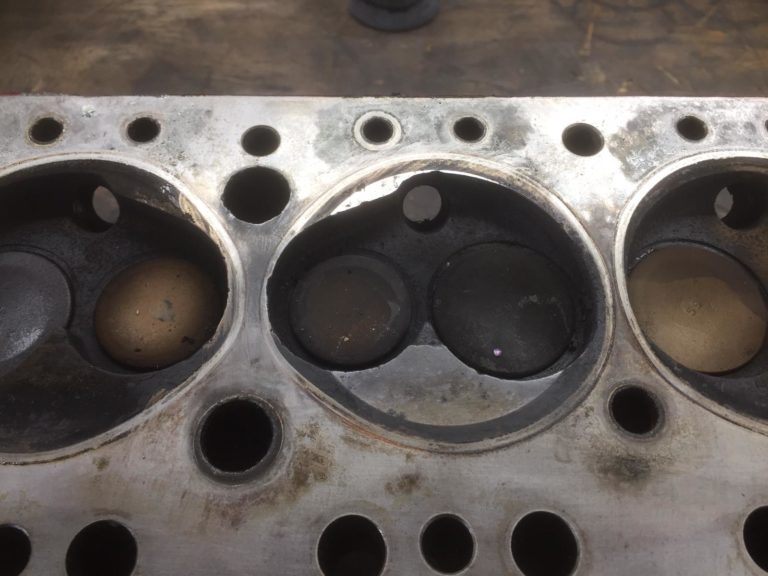
Ady has continued working on our 1960 MGA buy removing the cylinder head in his endeavour to fix the issue with the engine.

Our company van has been serviced and refurbished so it’s now running smoothly. We’re currently awaiting new graphics to be designed and applied, which we’re
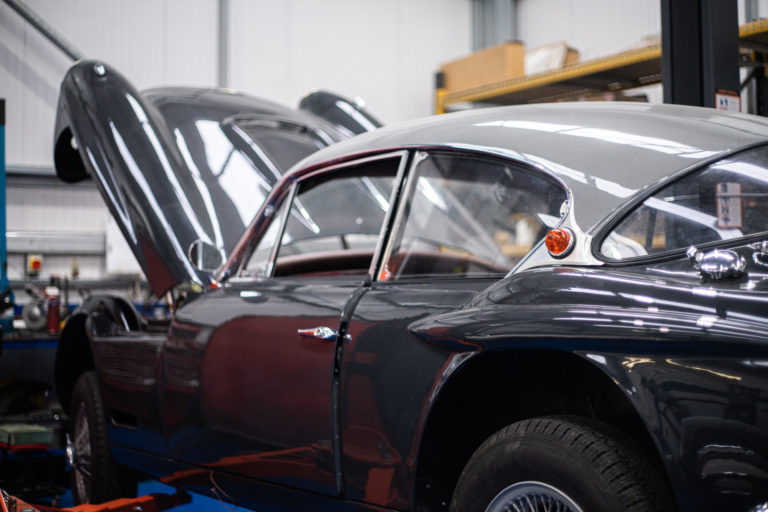
During testing we established a fault in the steering however we have since rectified the fault. Due to the Corvette engine, the manifold previously went

Heater removal Scott has been taking out the heater in our Ferrari Daytona so that it can be re-wired and refurbished. Trim The trim restoration
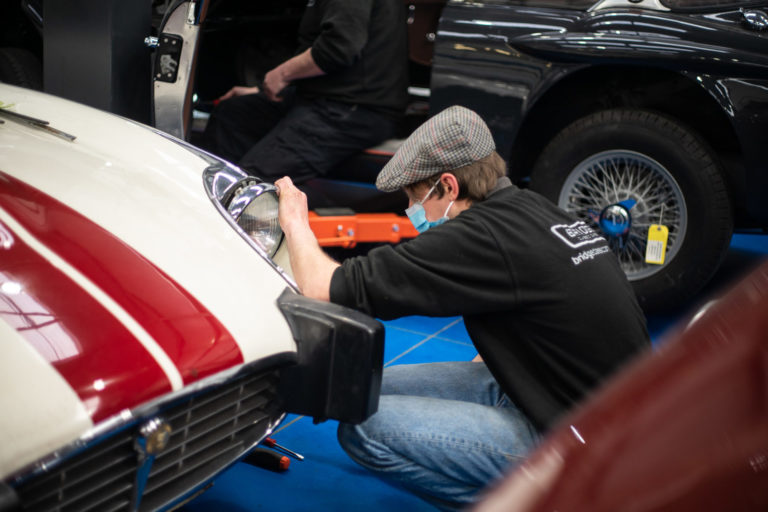
Dismantling the car: After having sourced this vehicle last year, it’s been sat in storage whilst we’ve worked on two other classics belonging to the
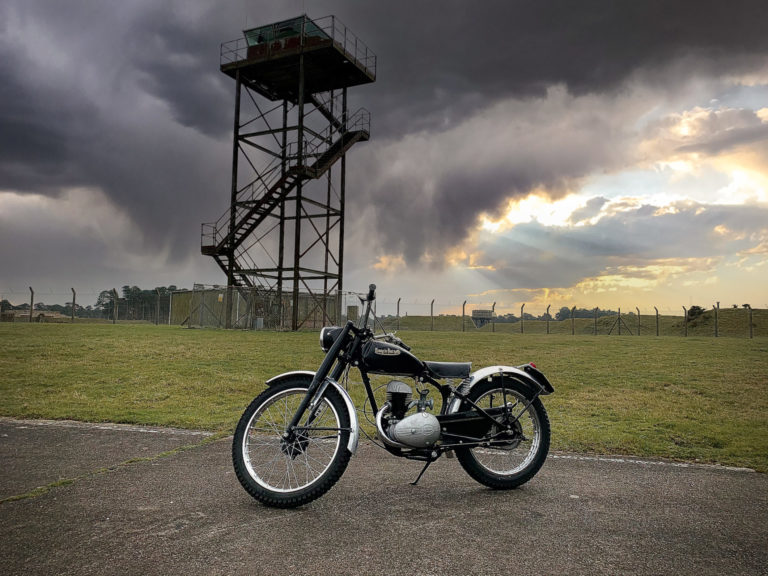
This 1953 Francis Barnet Rigid Body motorbike was delivered to us yesterday. For those with keen ears, you may have heard Craig mention an upcoming

We’ve got some seriously tiny cars in the workshop at the moment. They may be small but they are…or will be, mighty. On the whole,
This stunning 1940 Alvis has come in today for a new hood headlining as this one has had a run-in with his cats.
The owner of this classic Alvis has it as his pride and joy and drives it as his daily car.
The hood is now in the safe hands of our trim shop who’ll work to replace the fabric and re-work the inside of the hood.
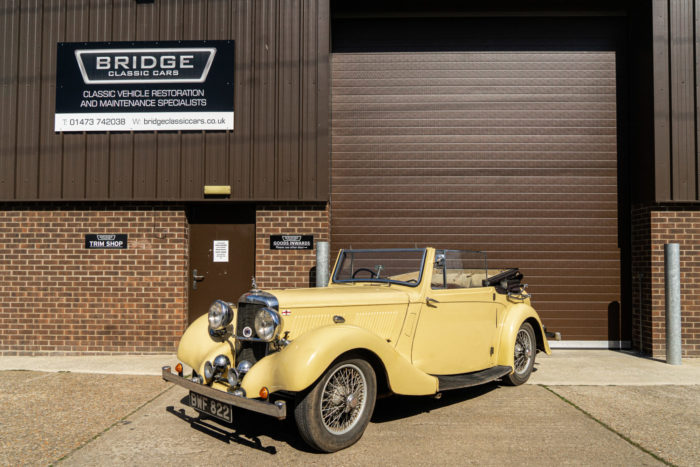
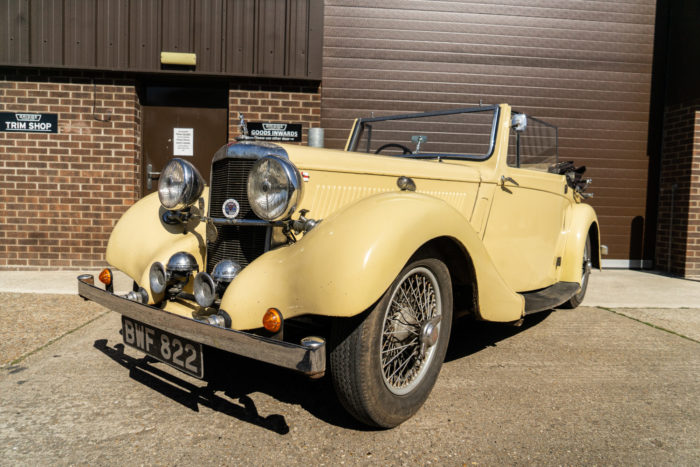

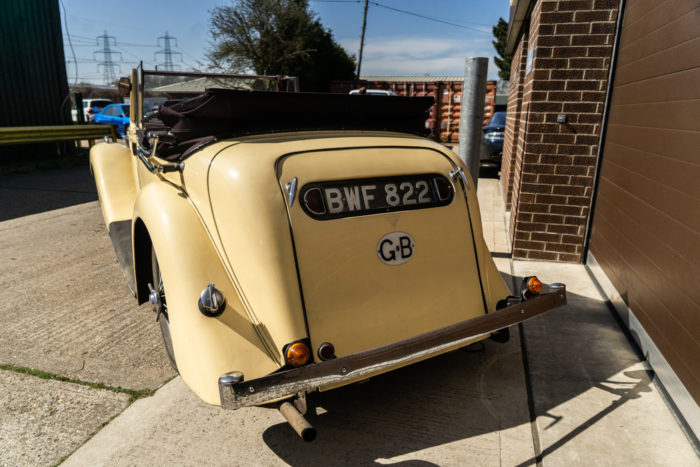

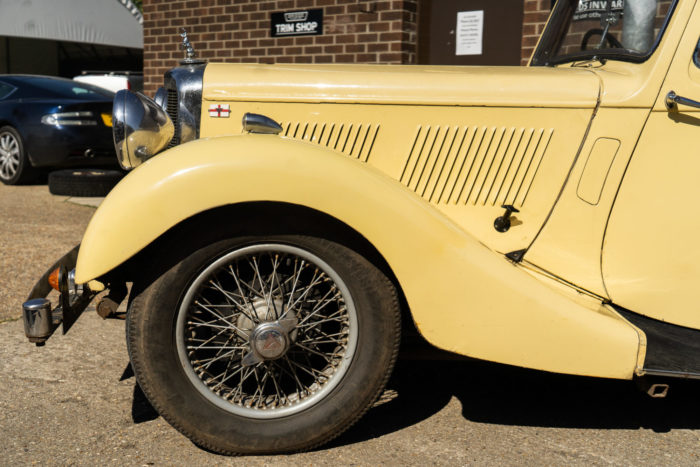
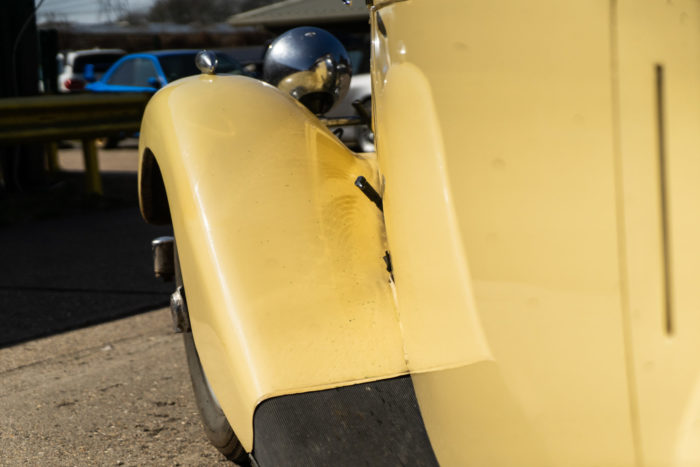
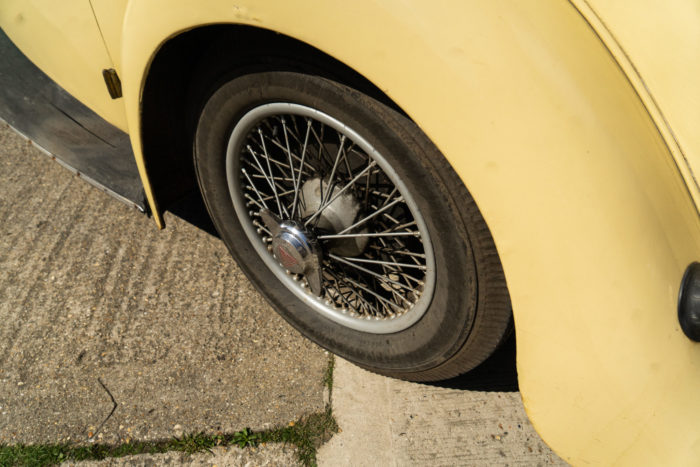
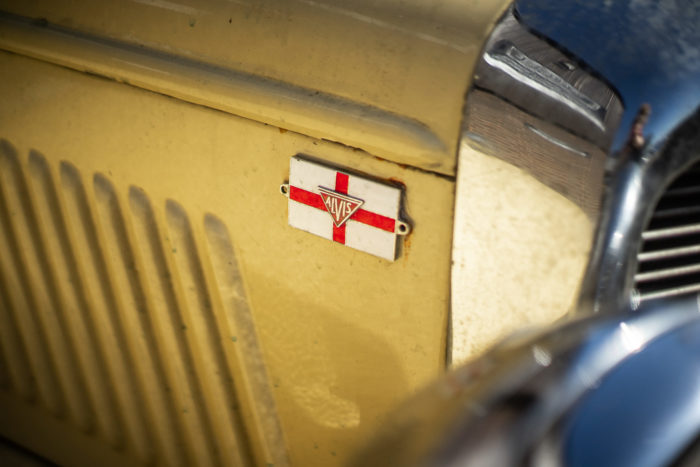
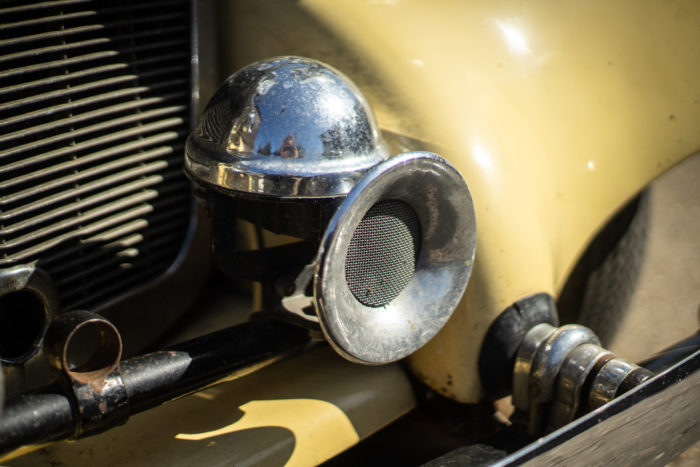
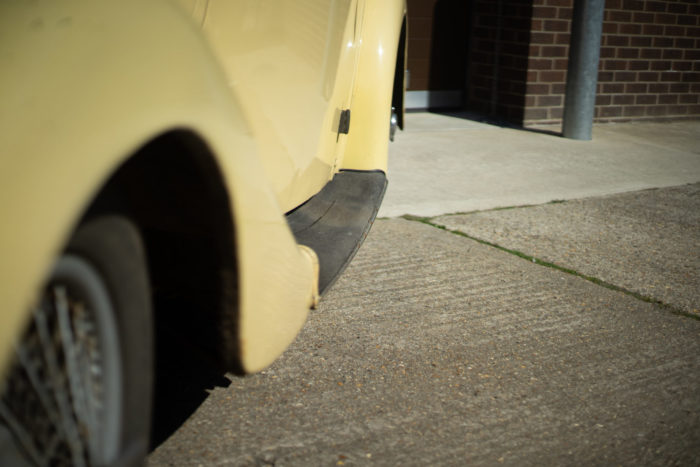





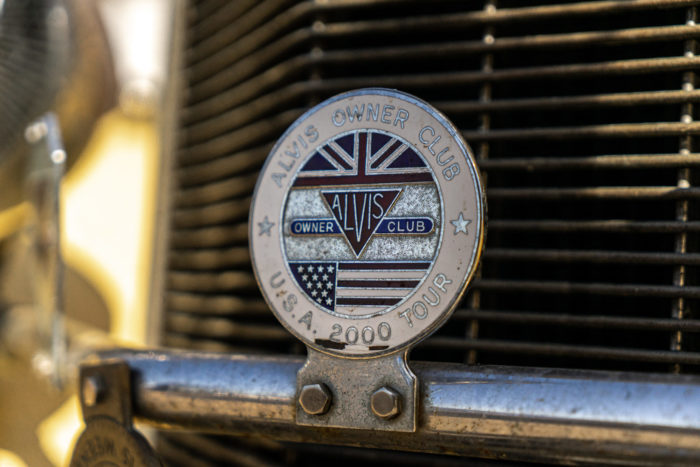
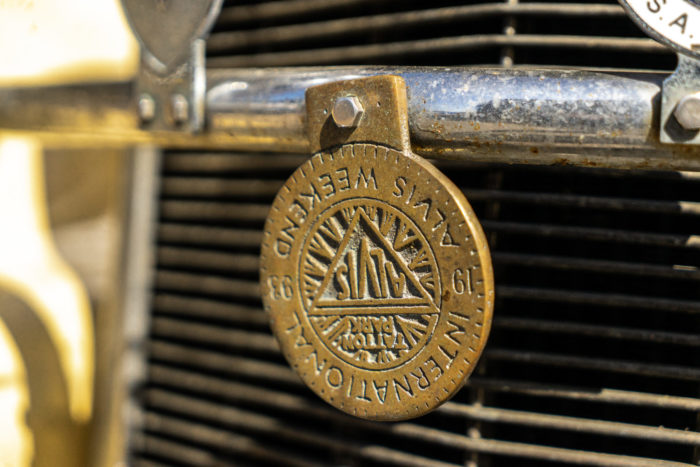
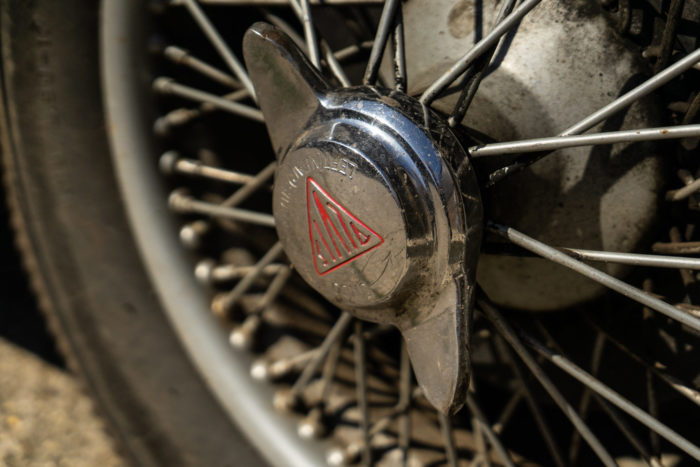
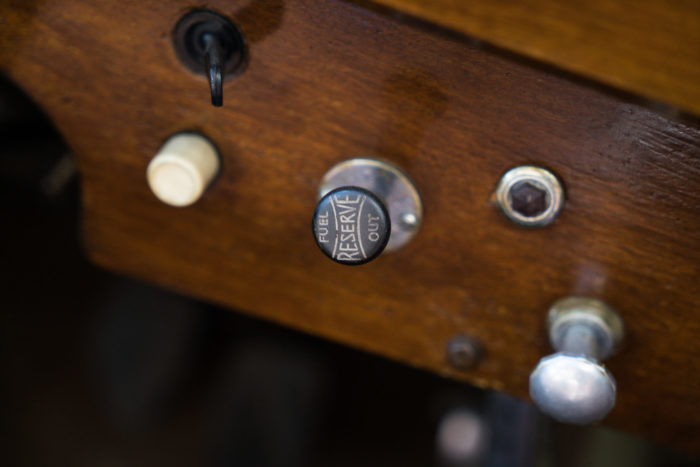
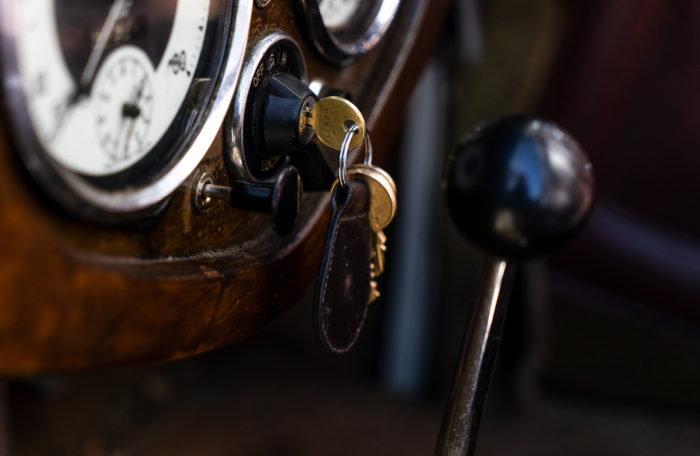
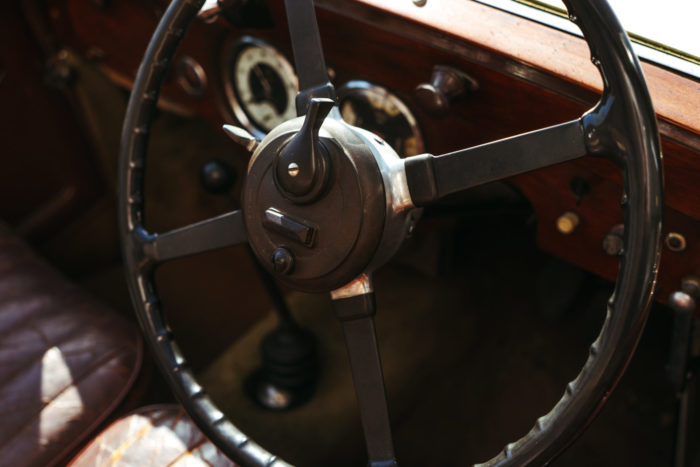

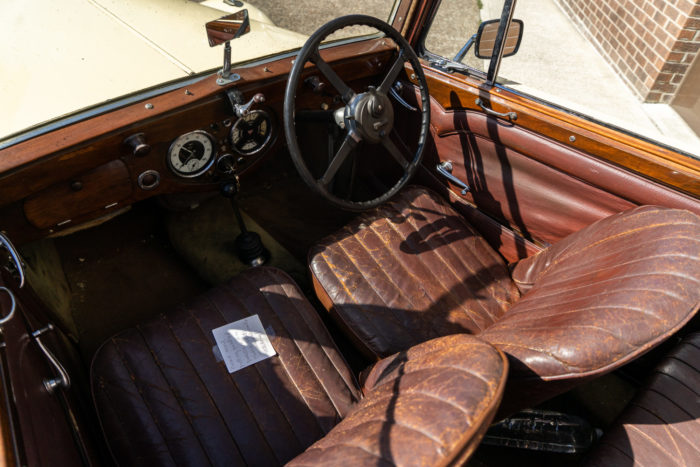
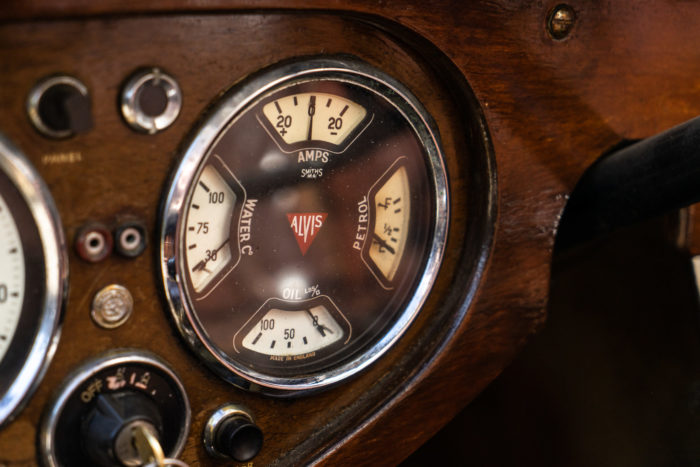
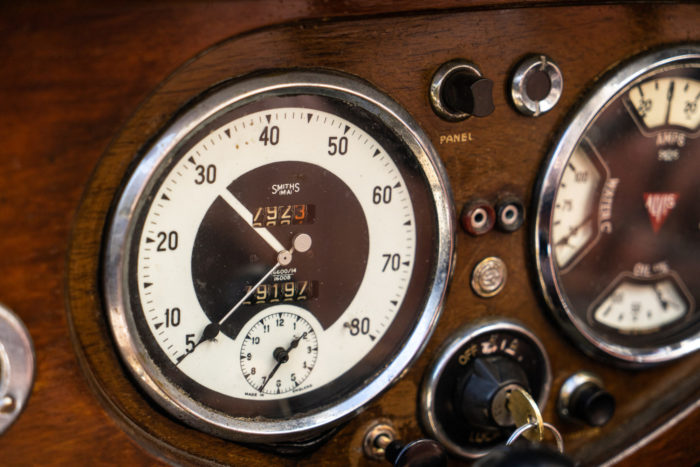
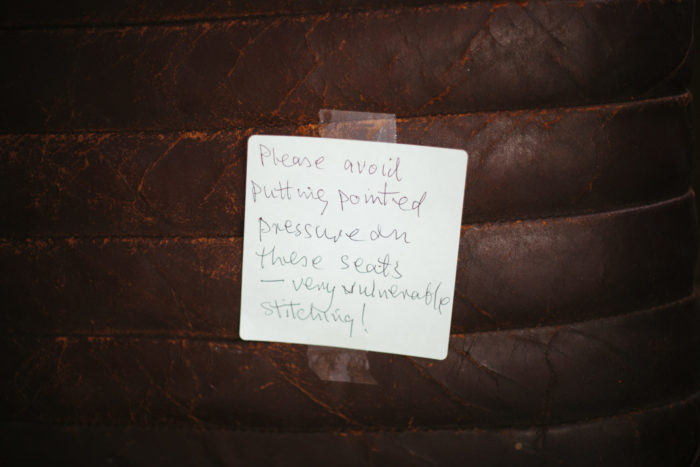

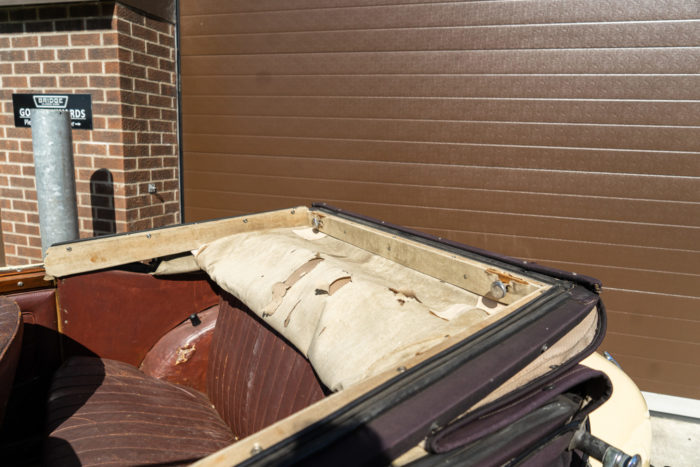
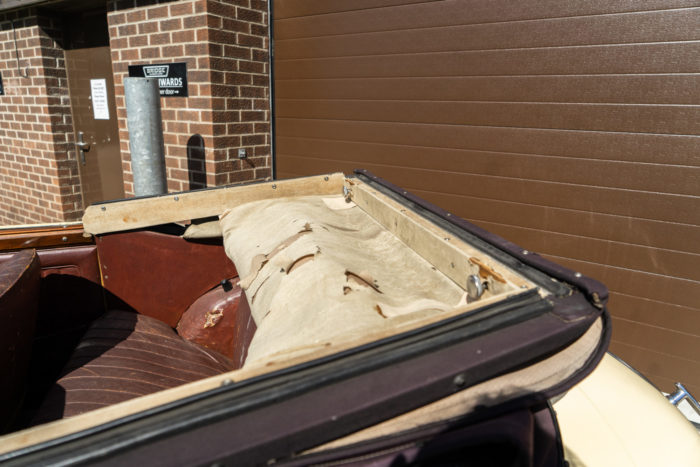
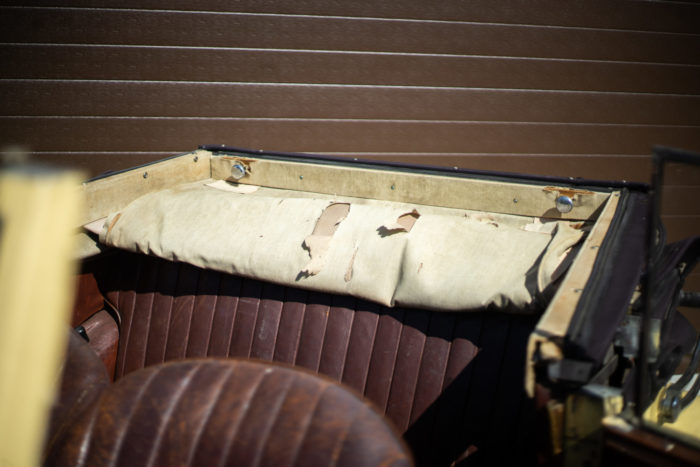
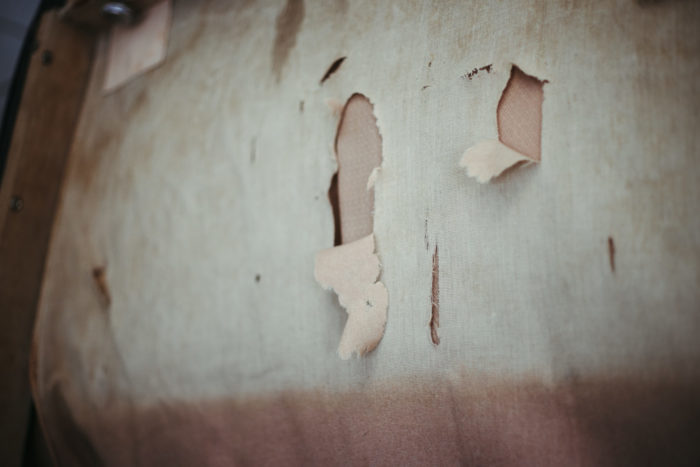
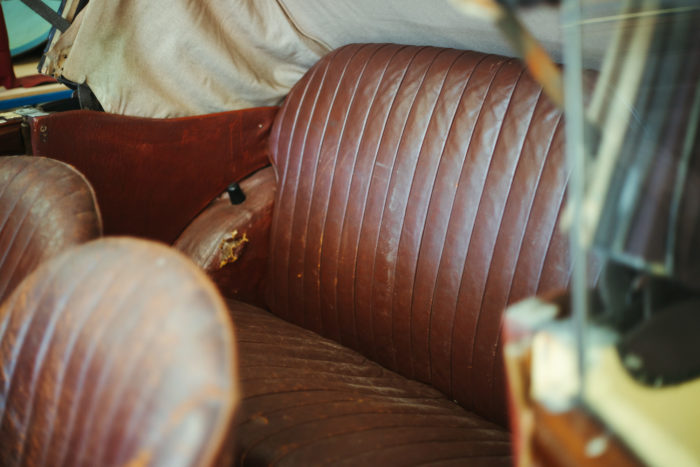


This 2000 Honda S2000 arrived today for some cosmetic TLC. With some paint chips and signs of rust, this little Honda just needs a small touch up and it’ll be ready to go. The perfect modern classic for summer cruising.
Our Honda’s TLC is mostly going to be concentrated around the wheel arches that need refurbishing.
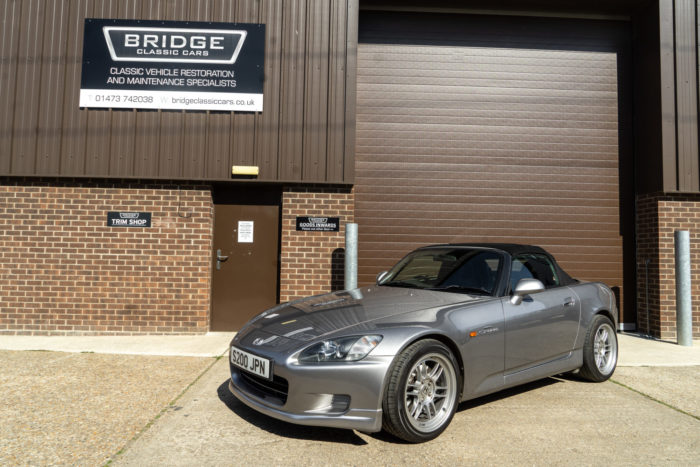


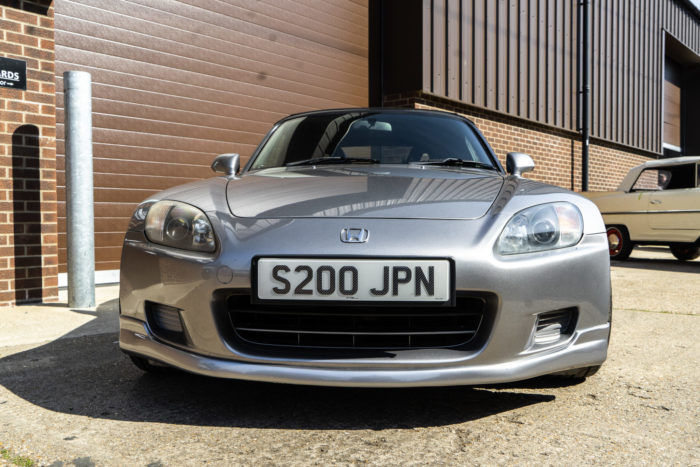
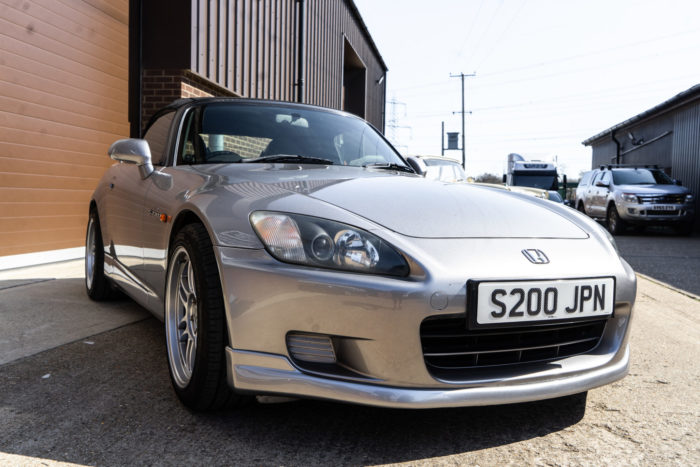

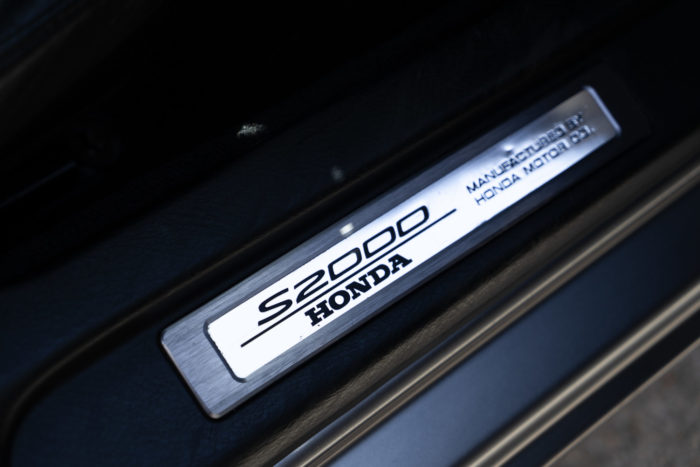
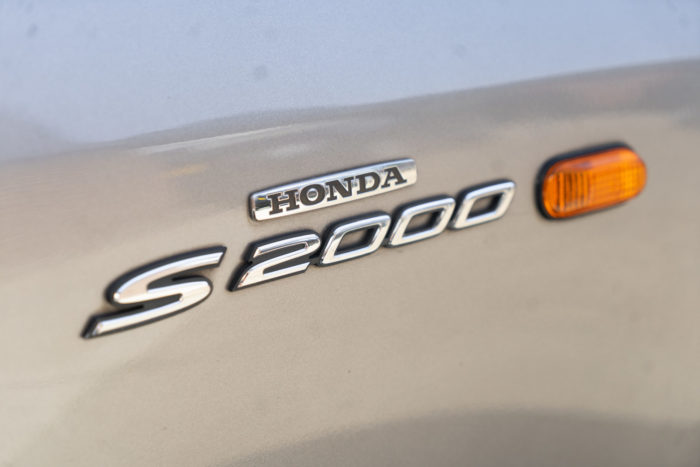

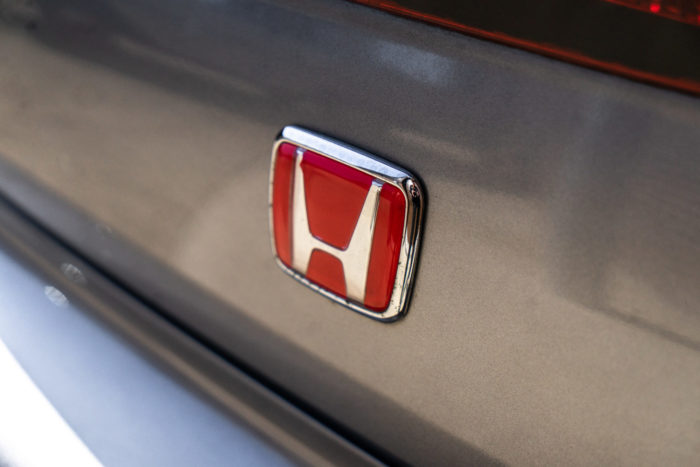
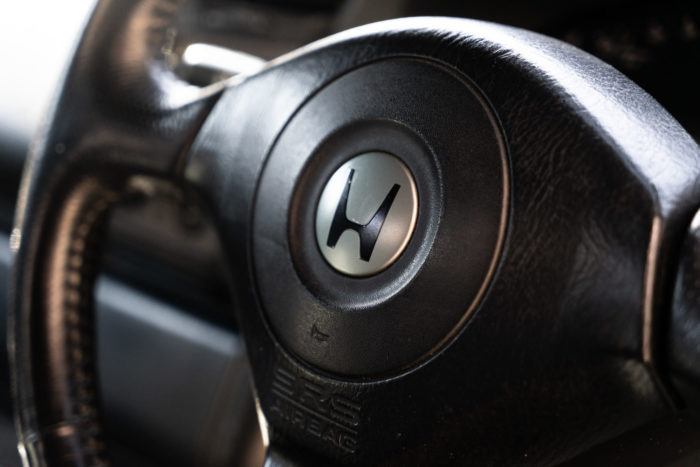

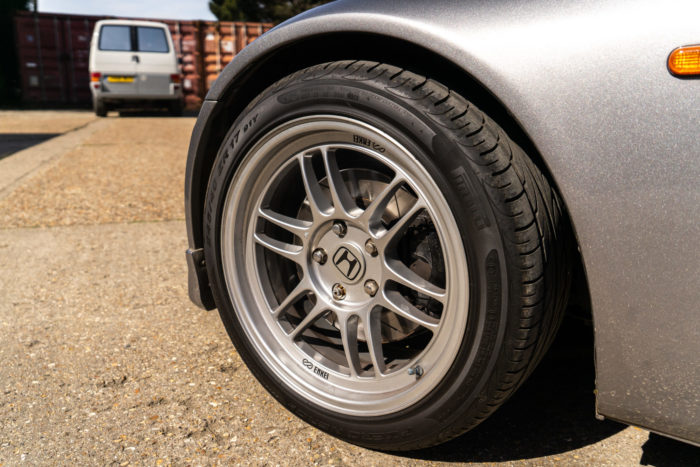
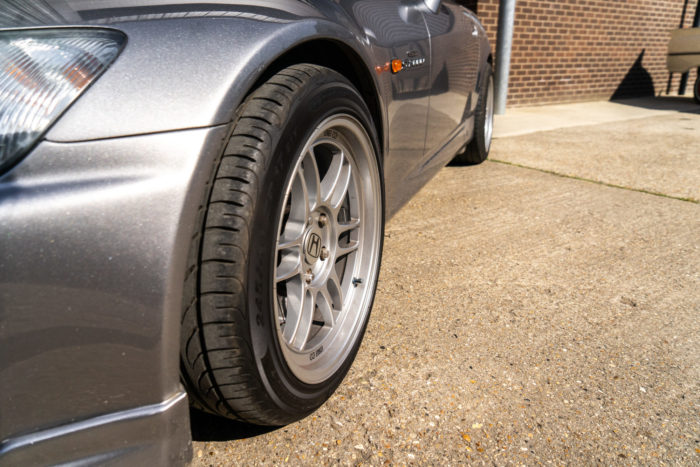




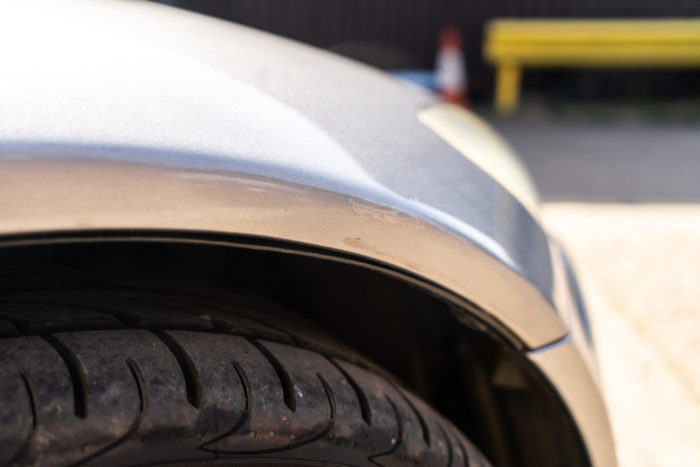
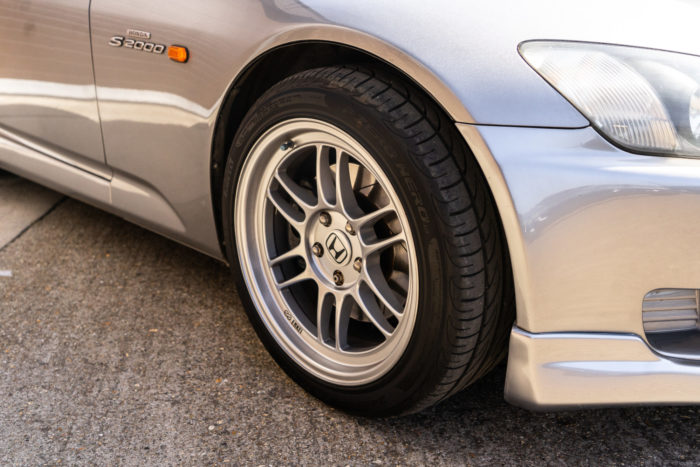
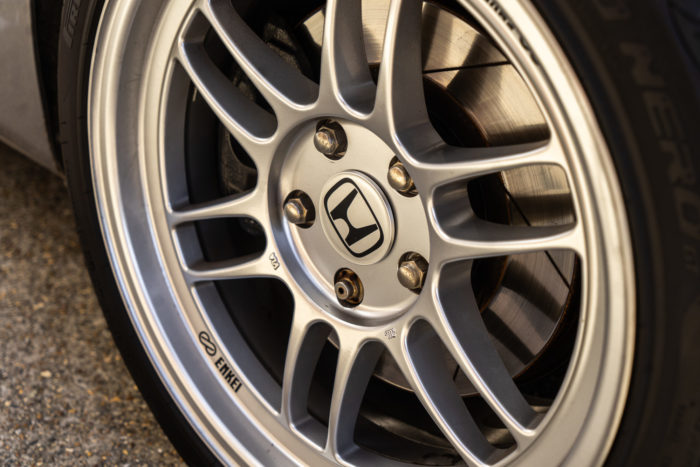
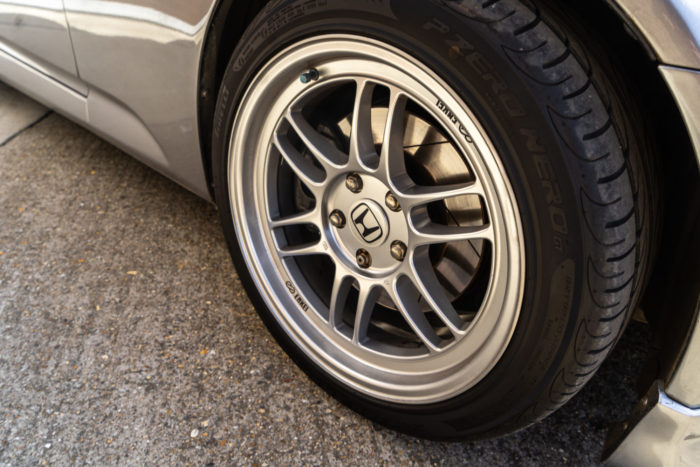

Our talented paint shop colour matched, masked up, primed and painted our 1993 Mini Rover side panels before it was sent back to Ted at Team C Racing (Formerly known as Anglian Mini Centre).
The trim shop has started on Craig’s 1987 Mercedes 500SL trim which is being done in a Claret red. Kath has been painstakingly pouring over the dash, making sure the intricate details of the holes and curves are perfectly catered for and covering in bespoke fabric, which has been pulled taught and glued back by hand. Dashboards are one of the interior details that many people forget about in their car but is the most likely to show signs of wear and sun damage. Being exposed to the sun and regularly act as a shelf for all kinds of ornaments, car dash’s can take quite the beating in their lives and often need re-covering to give it a new lease of life. Kath made a paper pattern first which she followed up by making a mock-up out of black vinyl before cutting and fitting the leather.
Brian has been working on removing the old covers from the rear quarter panels. Brian started at the end of the panel, glueing the leather cover onto the panel. He worked along with the panel slowly, glueing down parts one bit at a time to make sure the leather was pulled tight. Brian also had to work around details such as the speaker hole where he had to sand the edges of the board so it was smooth before applying the glue. Once it was sanded down, he glued the leather onto the back of the panel, sewing on flaps, fasteners and rivets to finish.
We thought we’d take a closer look at the finished Ferrari Daytona seats that the trim shop have made. Having had to make these all from scratch with appropriate modifications and alterations along the way, these seats are looking amazing. Finished in a green leather, they will match the colour tone of the Daytona paint work perfectly. We can’t wait to see them fitted in the Ferrari when its ready!
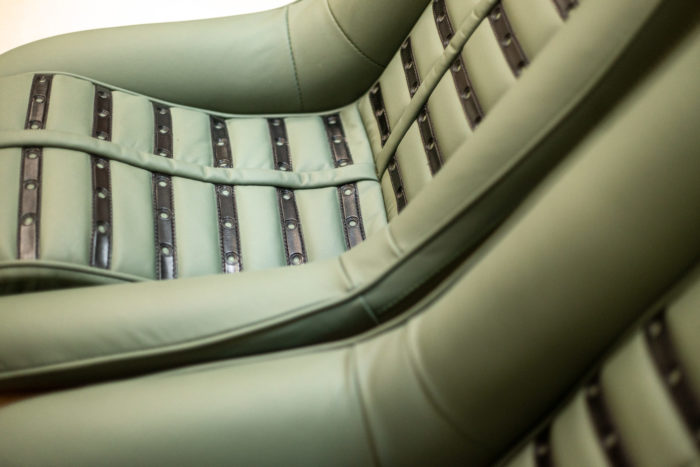

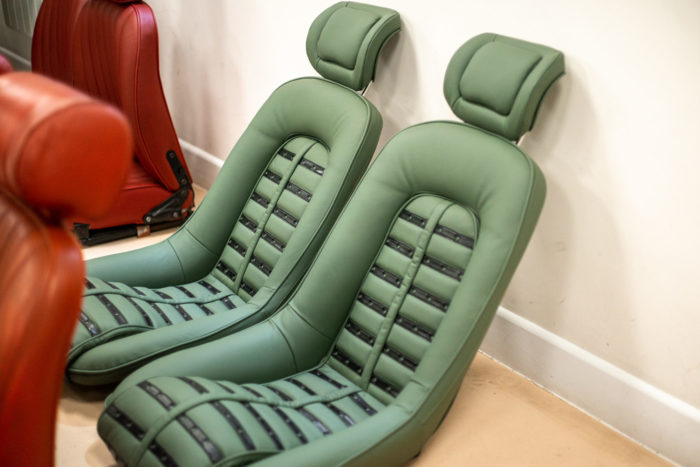
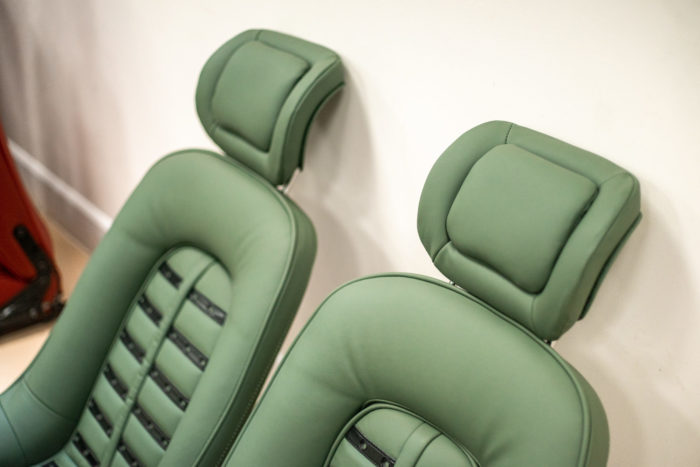

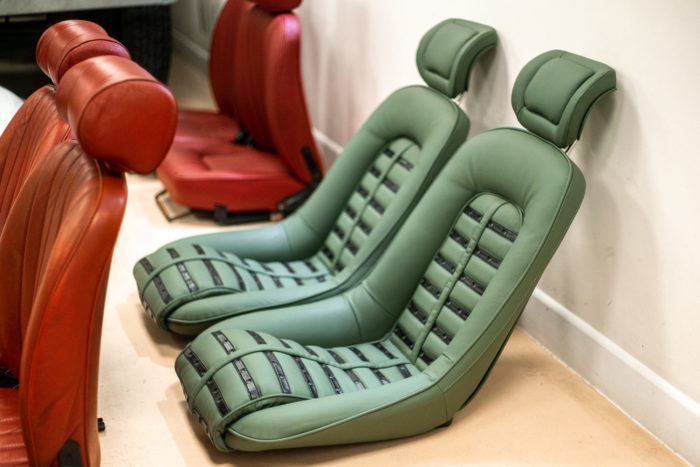
Lydia has also been working on covering various interior panels for the Ferarri as well. The first image shows the pair of console side panels in their original state before Lydia took off all the old leather, foam and plastic vents. She then cut new leather and foams out after cleaning the metal up, applied a layer of 3mm foam to the fronts of the panels and applied a layer of 3mm foam to the fronts of the panels. Lydia made sure that the leather was tucked in and glued underneath, then she added a layer of 3mm foam which was applied to the backs of the panels. All these fabrics were trimmed and tucked around the holes for the plastic vents to fit into.
Lydia then moved onto making the headlining for the Ferrari Daytona. She marked out the headlining fabric and foam for it, she then made slits for the flute lines on the foam so that the headlining fabric to lay better. She then fluted 14 flute lines, checking how it looked as she went. The finished result may look like a flate piece of fluted fabric, but it will become the headlining when fitted into place in the Daytona.
Scott has continued to dismantle our 1973 Beverly Hills Jaguar E-type Series 3 V12. He’s removed the bonnet, windscreen, top of the dashboard, heater box and various parts in the engine bay in readiness to get the engine ready to be removed. What was once a functional E-Type a week ago is now looking more like bare-bones however it’s exciting seeing it stripped down only to be built up brighter and better than ever before!
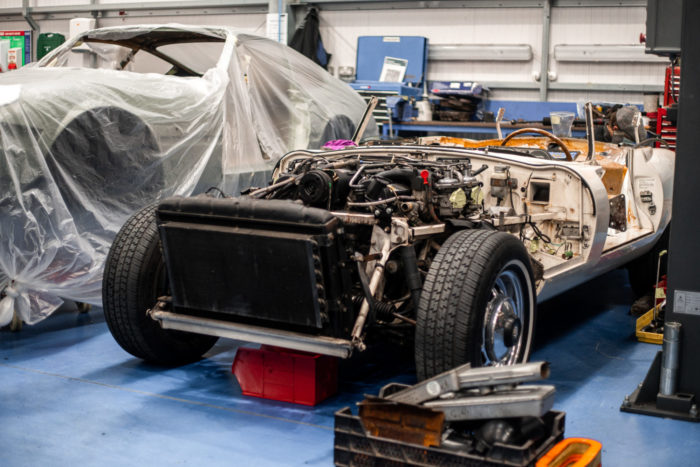

The EDP have recently put out an article with some behind the scenes photos of the up-coming Princess Diana film, ‘Spencer’. Seen in Norfolk on Hunstanton beach, Kristen Stewart is seen with what looks like a classic Porsche 911.
Kristen Stewart, who is cast as Diana, Princess of Wales in the upcoming film is seen from distance in the photographs alongside her co-star, Oscar nominee Sally Hawkins.
Film crews were spotted around the Norfolk village of Breckland near Attleborough.
We’ve worked on similar Porsche 911’s over the years as they are a popular and desirable classic. In 2018 we worked on a similar looked 1992 Porsche 911 Carrera 4 which came in for an MOT.
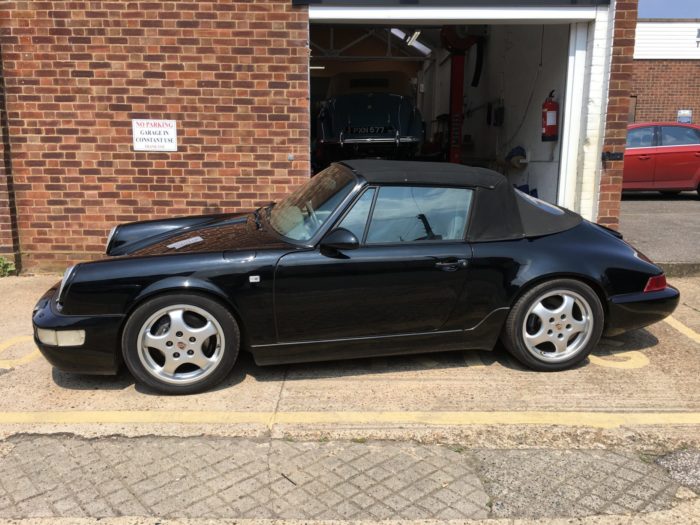


We’ve also recently welcomed back in our 1982 Porsche 911SC which, although is in blue, features a similar profile.
This rare 1955 Aston Martin DB2 / 4 Mark 1 arrived over the weekend and has come in for an assessment. Having been recently bought by our client, we are set to take a look over this stunning early Aston to understand what needs to be done to fully restore it.
With only 451 ever made and just two previous owners, this makes our Aston incredibly rare and sought after. Although not in its original Moonbeam Gray, it is in pristine condition for an early model Aston Martin.
Our 1991 VW T4 Transporter Campervan is road trip ready again and just in time for the summer! Its been thoroughly cleaned and painted and has had all its rust treated to give it another lease of life. Its owners are coming to collect it tomorrow and we can’t wait to see their reaction!
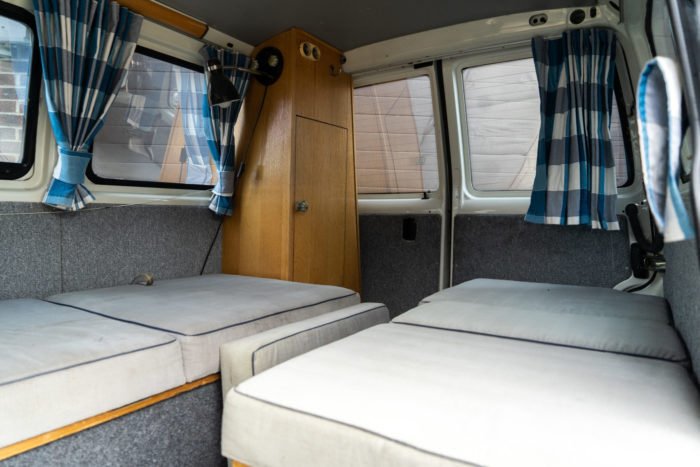

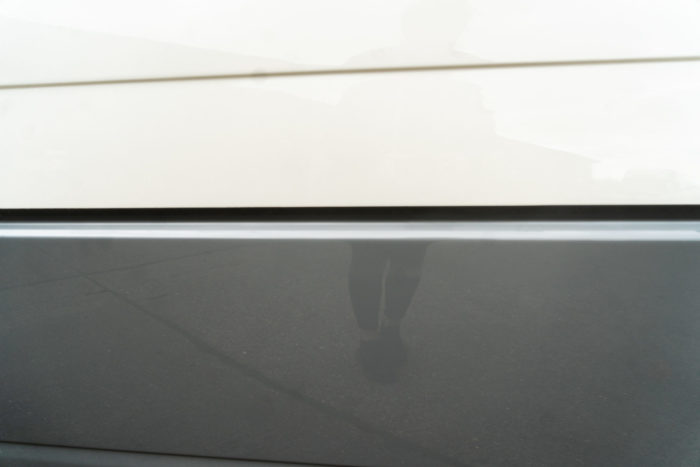
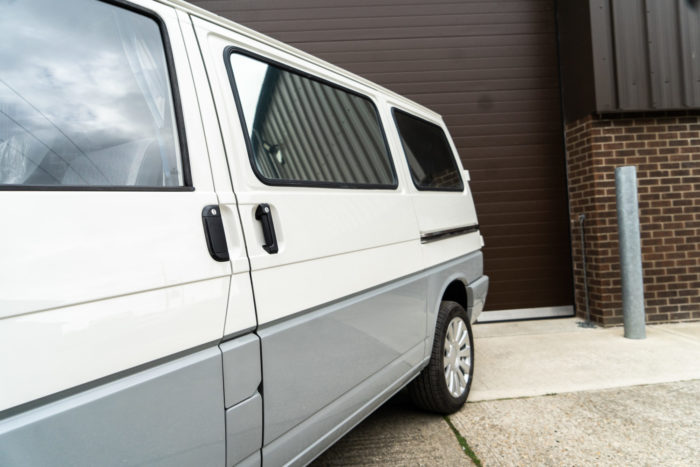
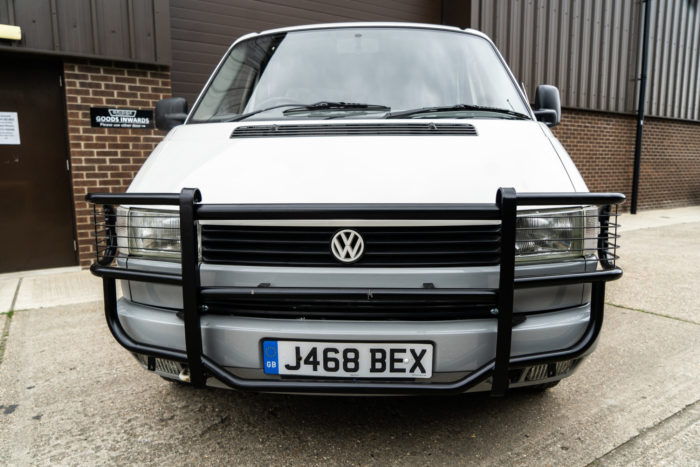

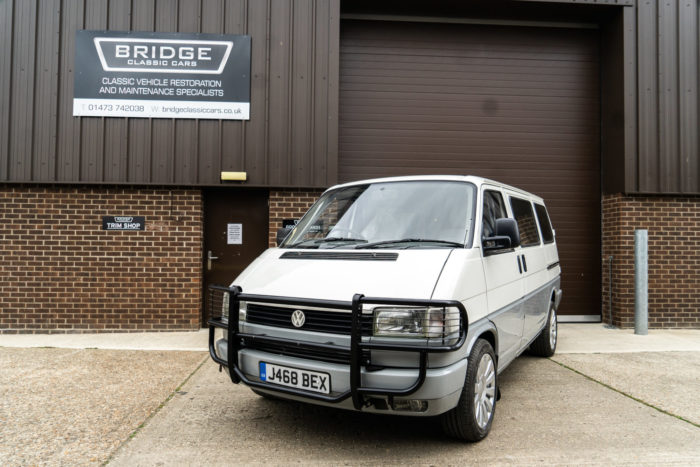


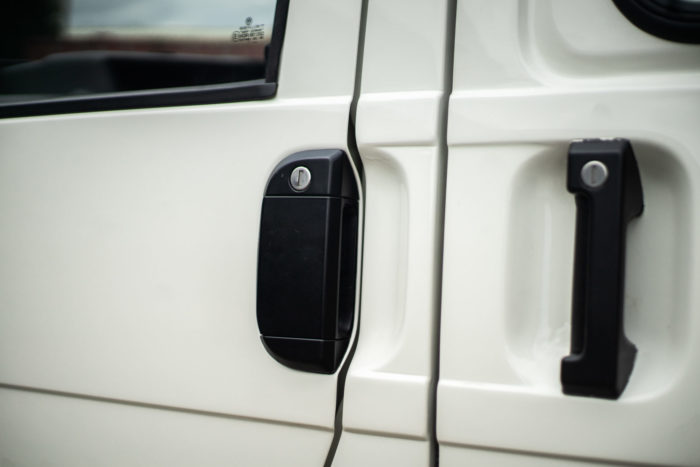
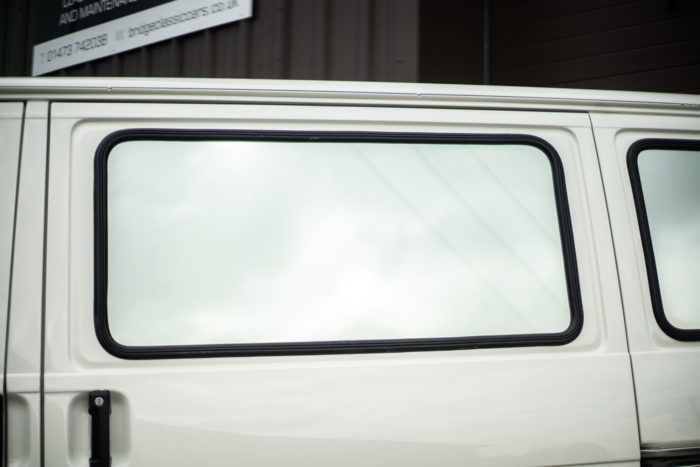
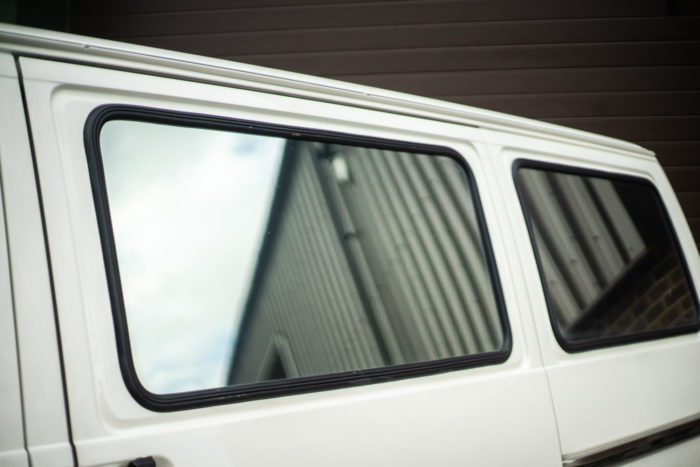
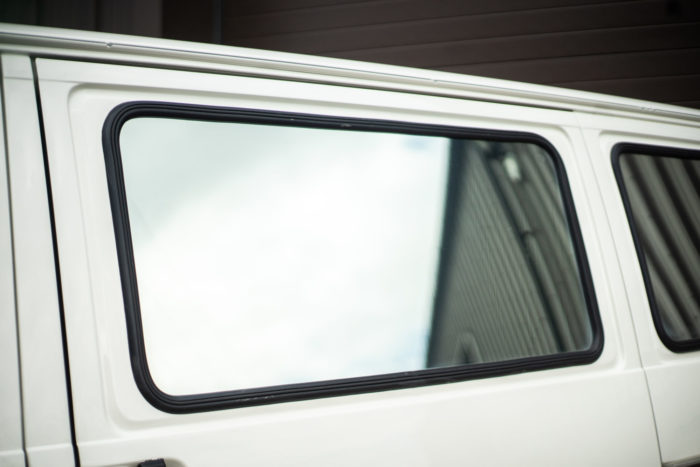

Our 1973 Claret (Maroon) Triumph Stag has made its way into our workshop after waiting patiently in our hanger at Bentwaters. This Stag is in for a full restoration as its looking far from its best at the moment.
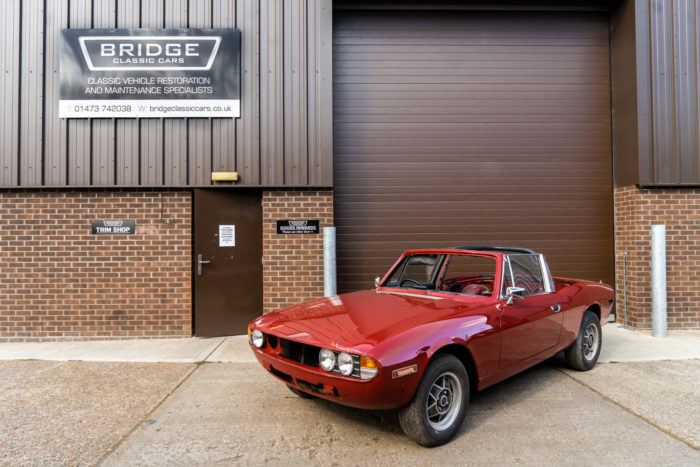
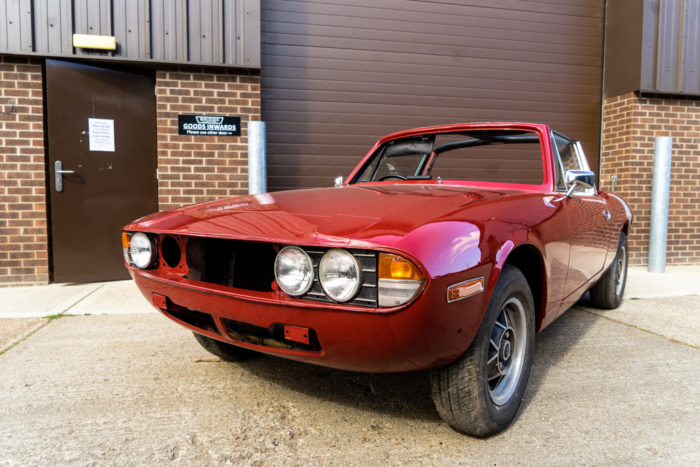
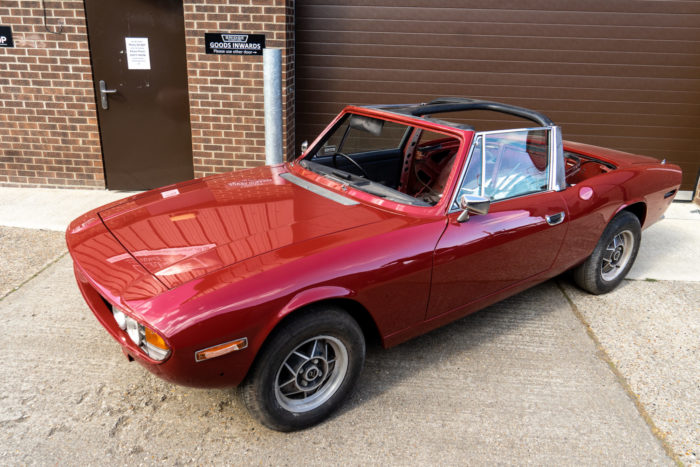

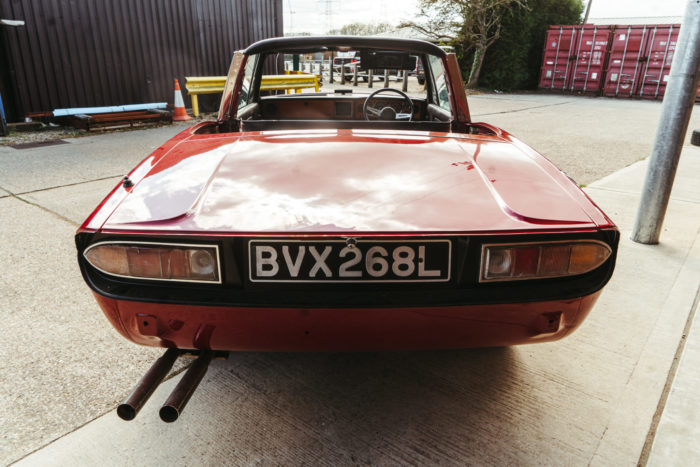

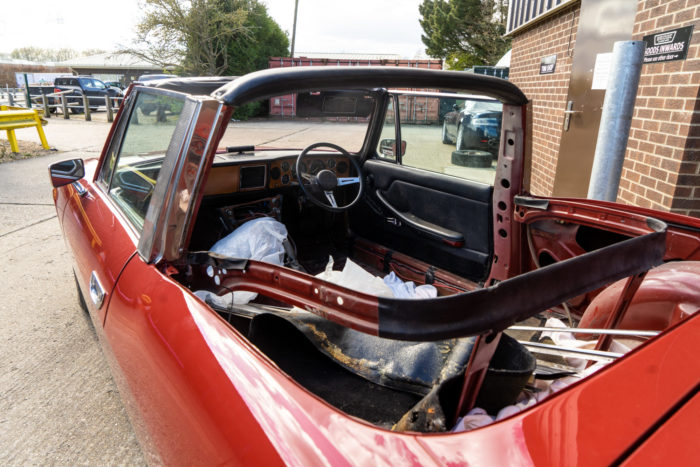
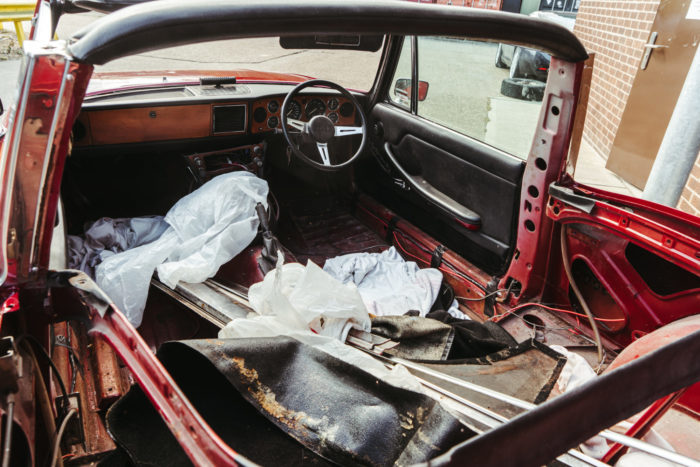
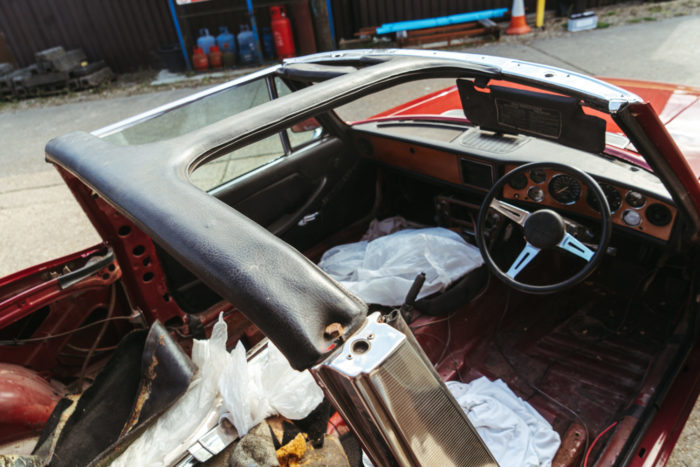
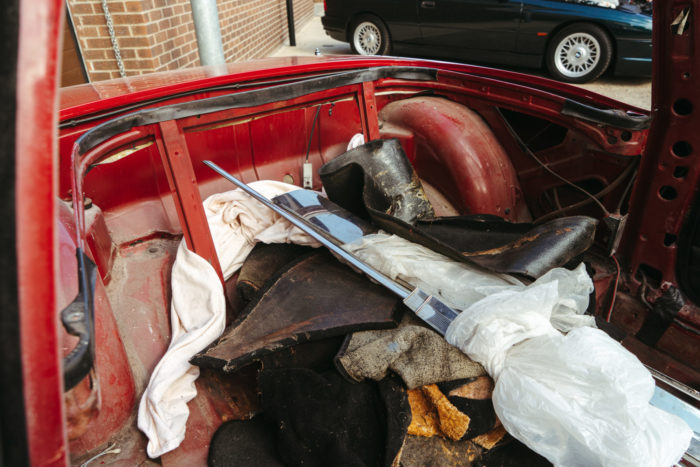
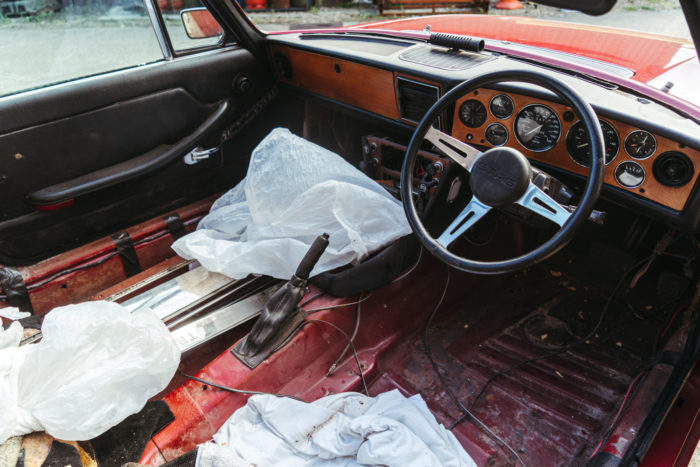
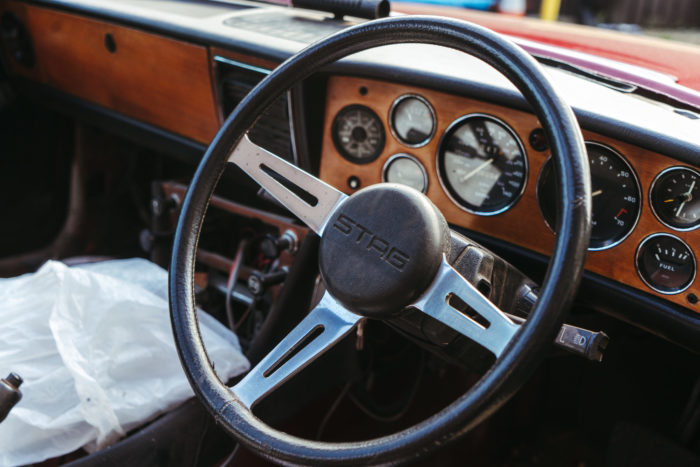
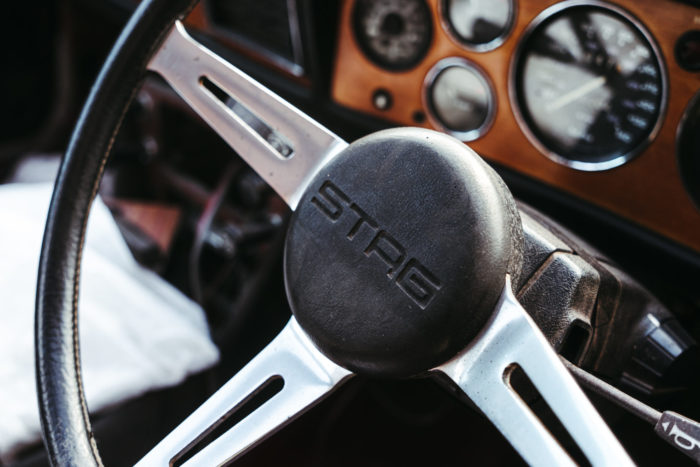

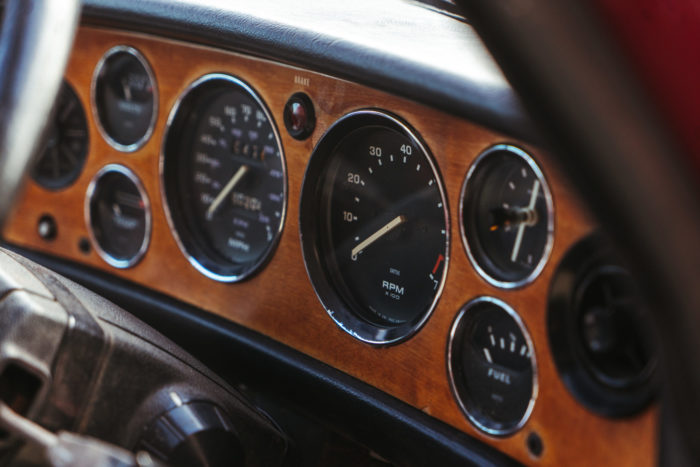

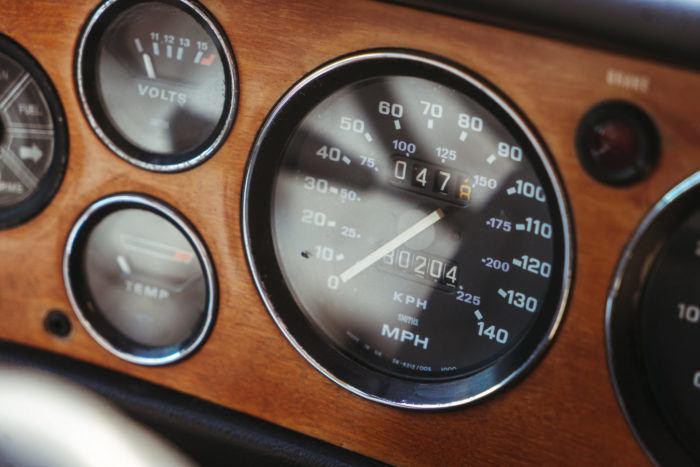

This rare classic has just come into our workshop with an interesting history. This is the background supplied by Bonhams;
EX-PHILIPPE BLÉSIN
1955 ASTON MARTIN DB2/4 ‘MARK I’ 2.6-LITRE SPORTS SALOON
COACHWORK BY MULLINERS OF BIRMINGHAM
CHASSIS NO. LML/678
ENGINE NO. VB6E/50/1407
“The Aston Martin DB2/4 is an expensive car designed to cater for the connoisseur of sports cars who is not limited by financial considerations.” – Autocar, 2nd October 1953.
With the introduction of the ‘2+2’ DB2/4 in October 1953, Aston Martin extended the DB2’s appeal to the hitherto untapped yet increasingly important market comprised of ‘sports car enthusiasts with a family’. Modifications to the rear of the chassis plus a reduction in fuel tank capacity from 19 to 17 gallons liberated sufficient space within the existing design for two child-sized occasional rear seats. Alternatively, the rear seat backs could be folded down, thus creating a load-carrying platform that more than doubled the luggage space. The latter could be accessed via the 2/4’s opening rear door, a pioneering example of the now commonplace ‘hatchback’ concept.
“This transformation gives the Aston Martin DB2/4 an unrivalled luggage-carrying capacity in a car which should be capable in favourable circumstances of achieving two miles a minute,” reported The Motor. “The DB2/4 can truthfully claim to be the fastest car in the world capable of carrying two people with a month’s luggage.”
Standard specification included the 2.6-litre VB6E engine in 125bhp Vantage tune, while from early in 1954 the 3.0-litre 140bhp VB6J engine became available.
This right-hand drive DB2/4 was supplied new to Aston Martin’s Belgian importer Mannes and sold to a company in Brussels, where it was first registered on 7th July 1955. Interestingly, ‘LML/678’ has two external locking handles for the rear hatch; these were not a feature of the standard arrangement, the hatch being released by pulling a lever behind the driver’s seat.
A matching-numbers example, the car is believed to have had one owner up to June 1985 when it passed to Marcelle Autier of La Louvière and was reregistered (document on file). The accompanying (copy) guarantee form records three services, the last one in 1956 at 15,311 kilometres.
The Aston remains highly original apart from a colour change from Moonbeam Grey to the present light green, and an interior re-trim, alterations believed to have been carried out in 1985 with the change of owner. In 2007 the DB2/4 was bought by the well-known Aston Martin collector Philippe Blésin, who sold it to the current owner without having registered it in his name, resulting in this DB2/4 having had only 2 registered owners from new.
Unmolested and in well-preserved ‘barn find’ condition, ‘LML/678’ represents an excellent basis for a complete restoration or could well be used as a daily driver following a mechanical re-commissioning (the car is in running condition). Presumably dating from the 1980s, the lovely dark green interior appears in very good condition and has a lovely patina. The odometer reading of 75,770 kilometres is believed genuine.
A wonderful opportunity to acquire a highly original, matching-numbers example of this landmark Aston Martin model.

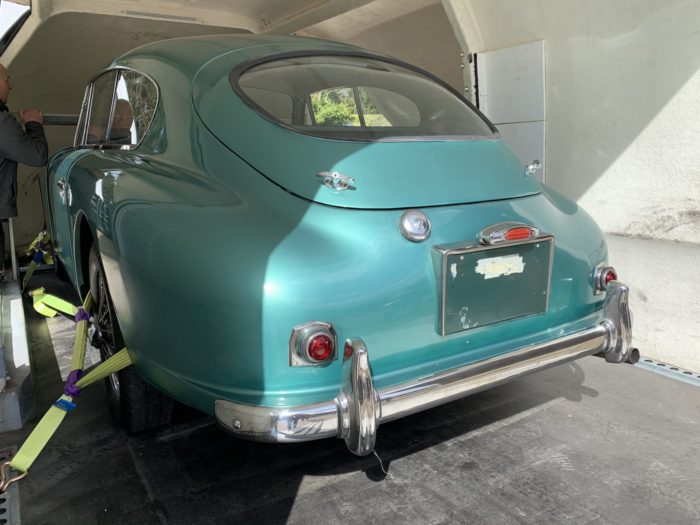
Ady has been taking apart the engine to try and understand the root cause of the engine troubles on our lovely 1960 MGA. He’s found that the bearings in the big end journal were so worn they were loose and therefore able to be moved around. The video below clearly displays the issue:
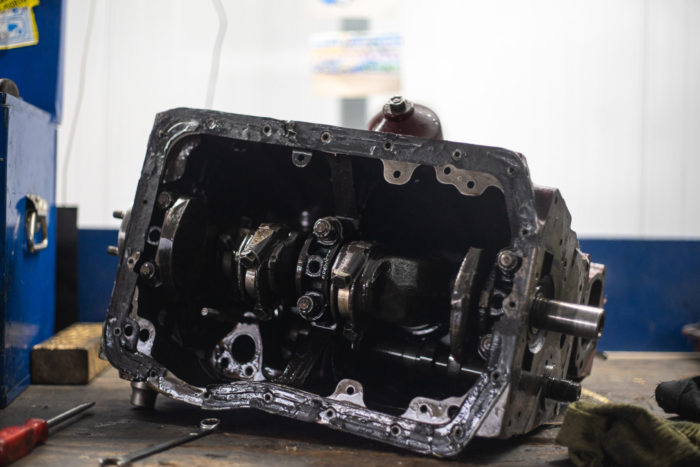

The photos seen below show the following:
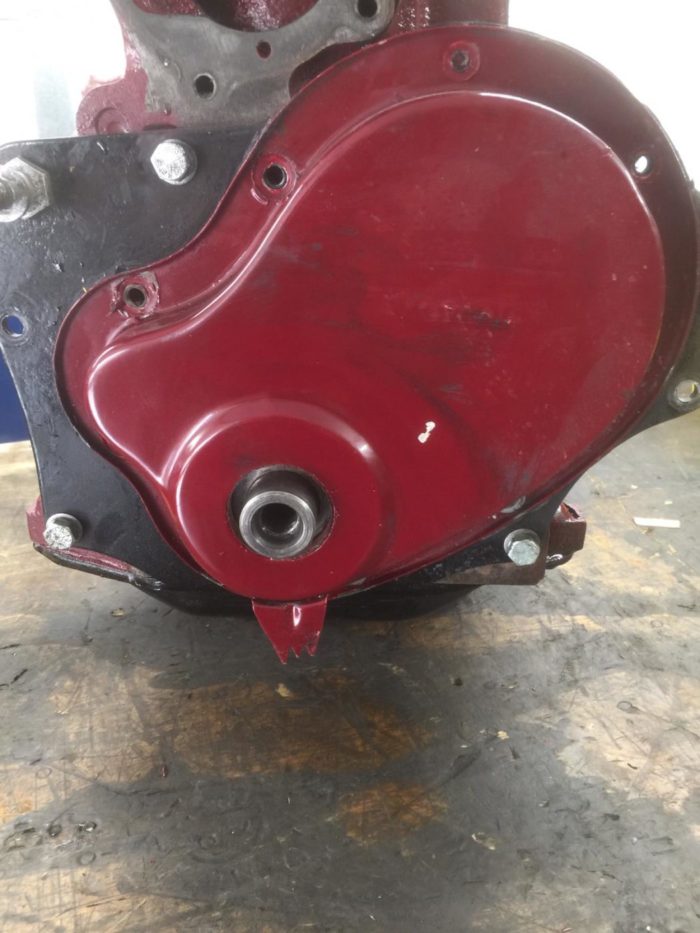
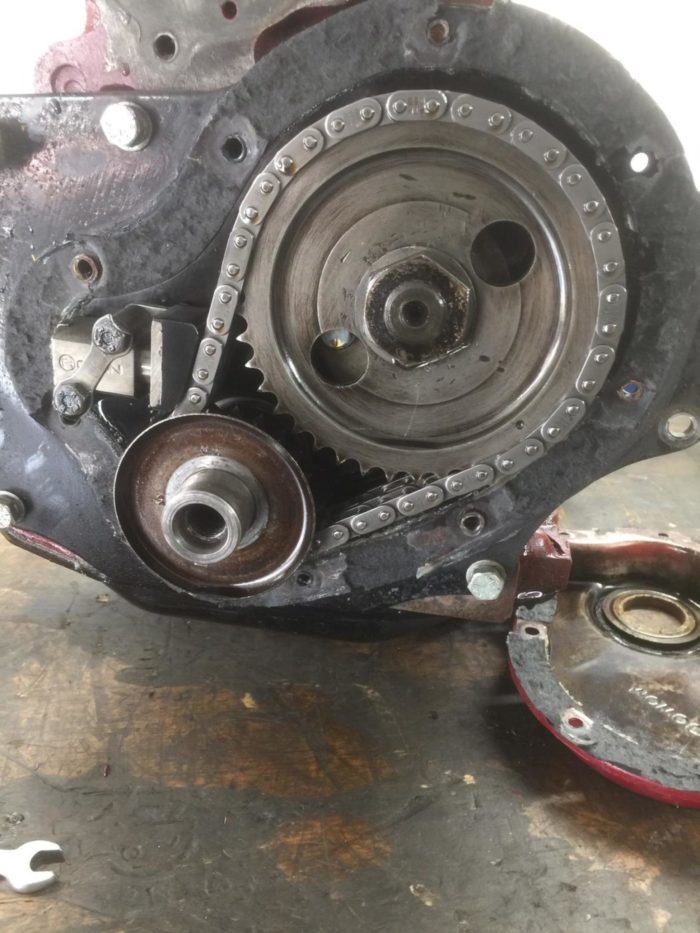
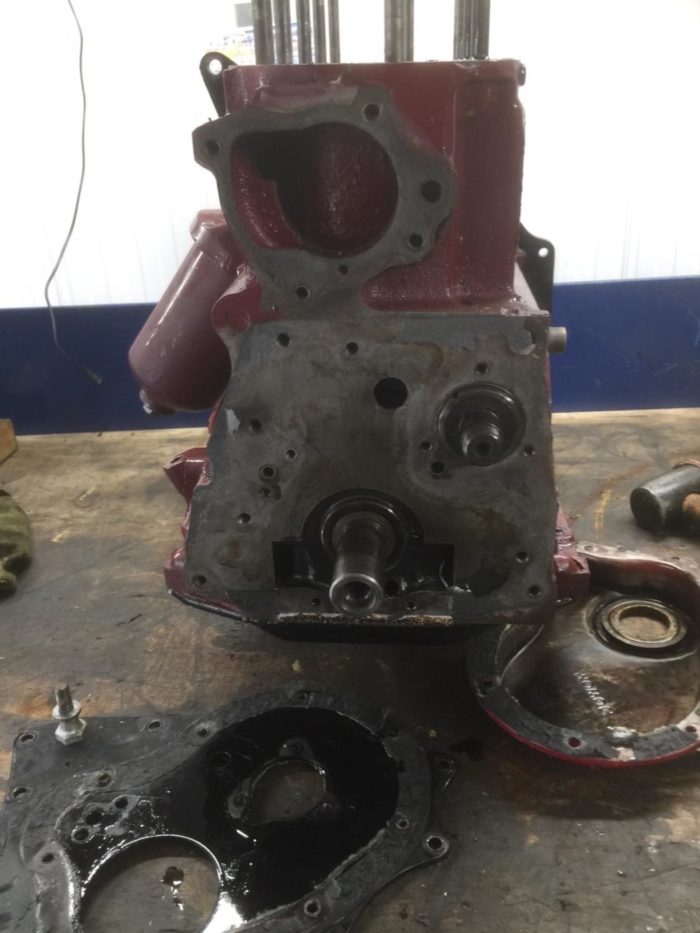
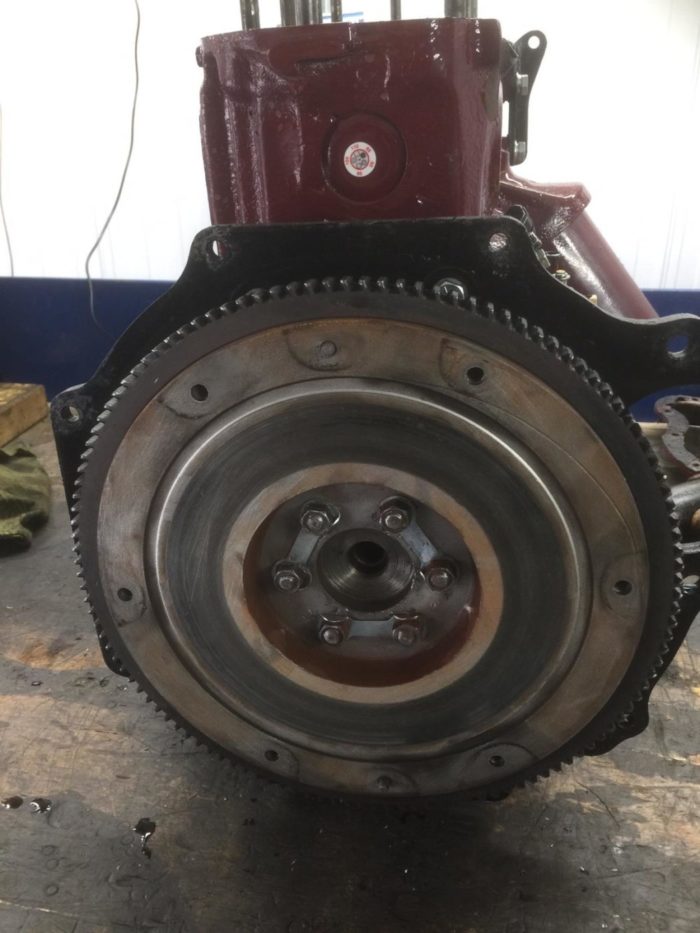
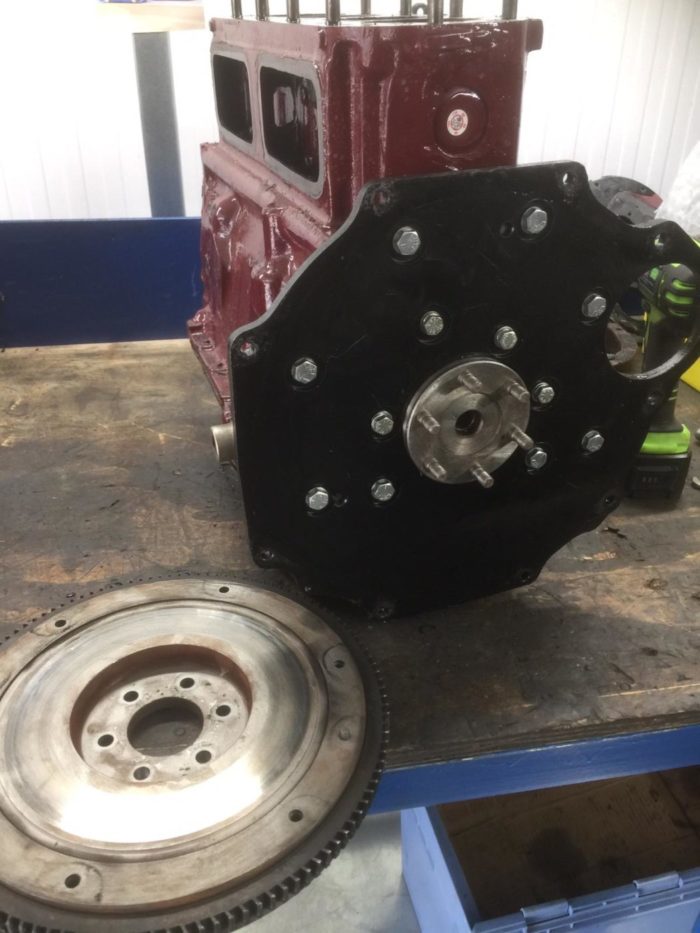
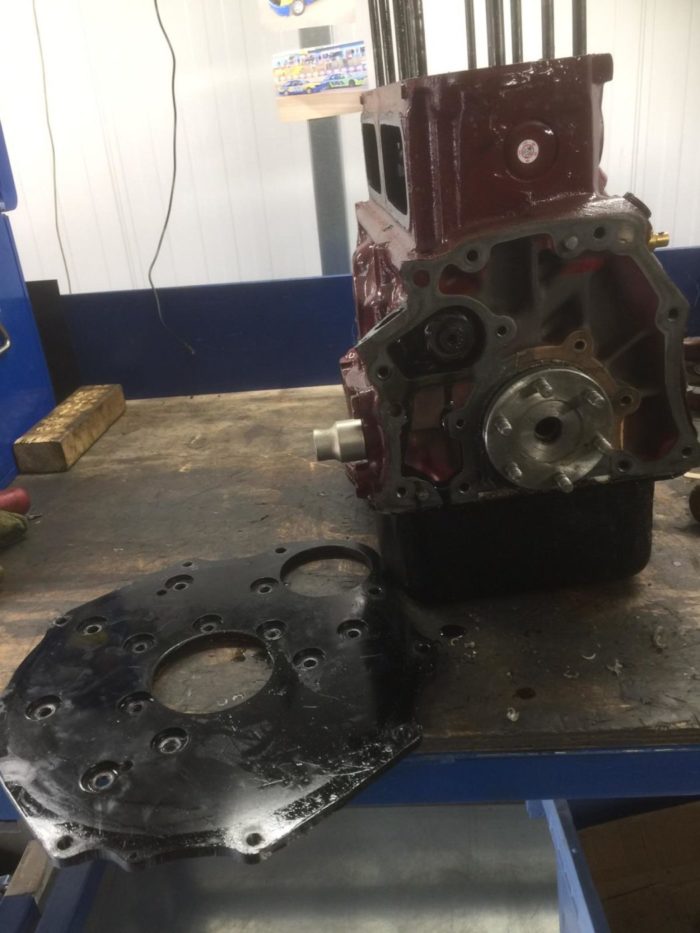
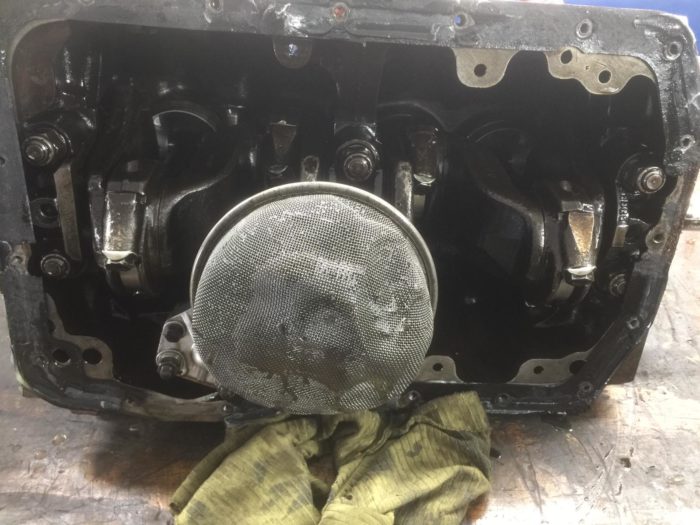
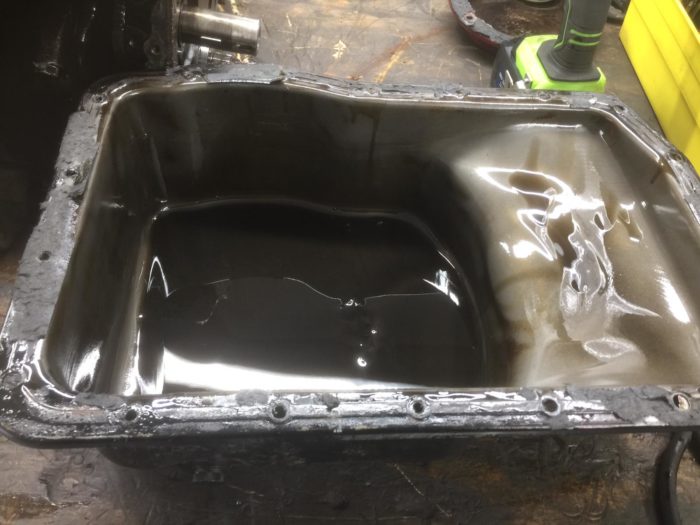
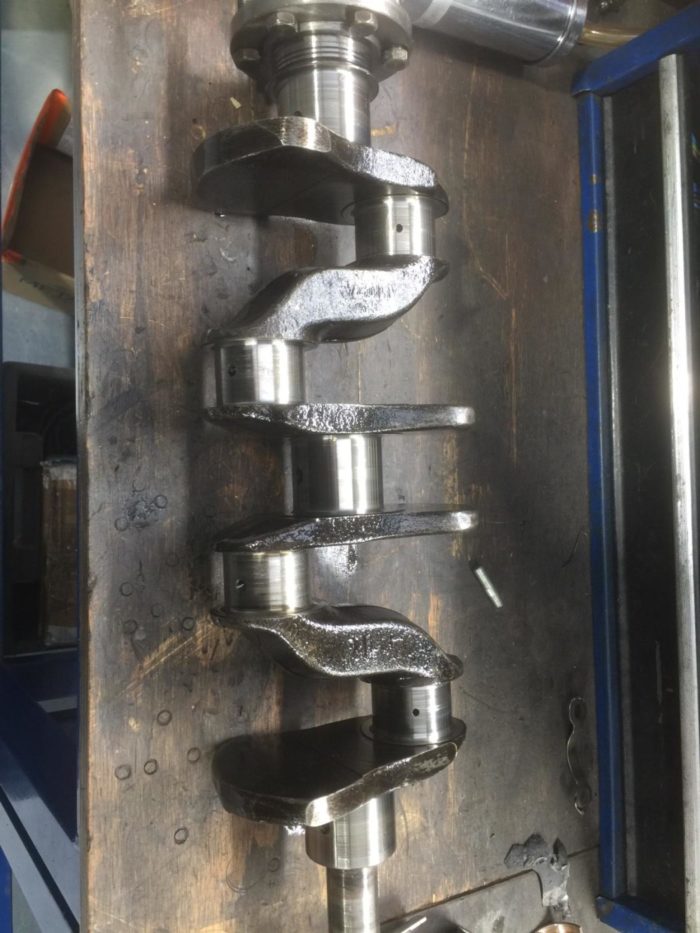

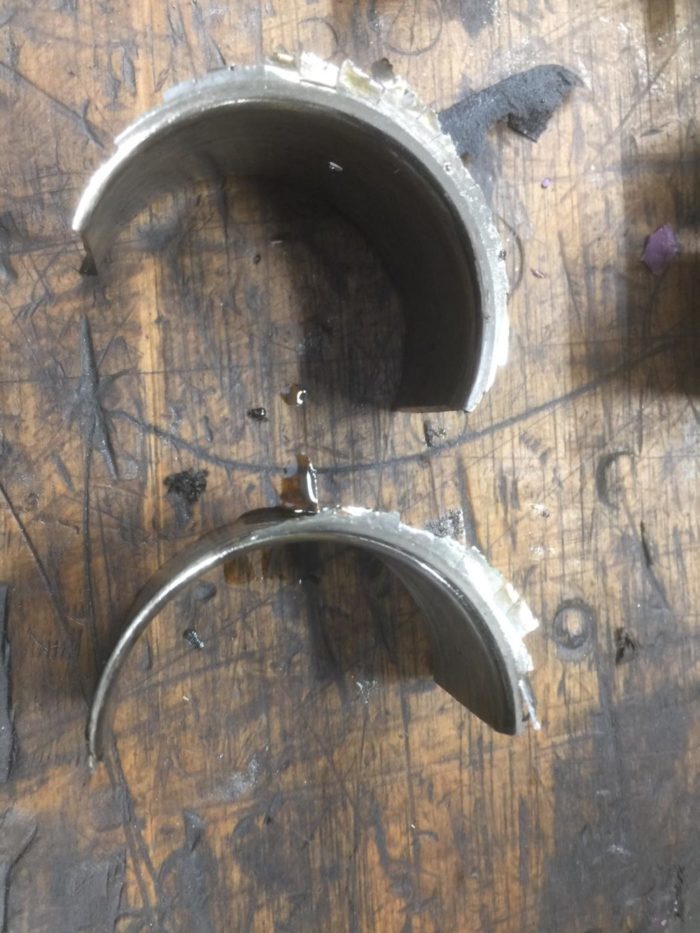
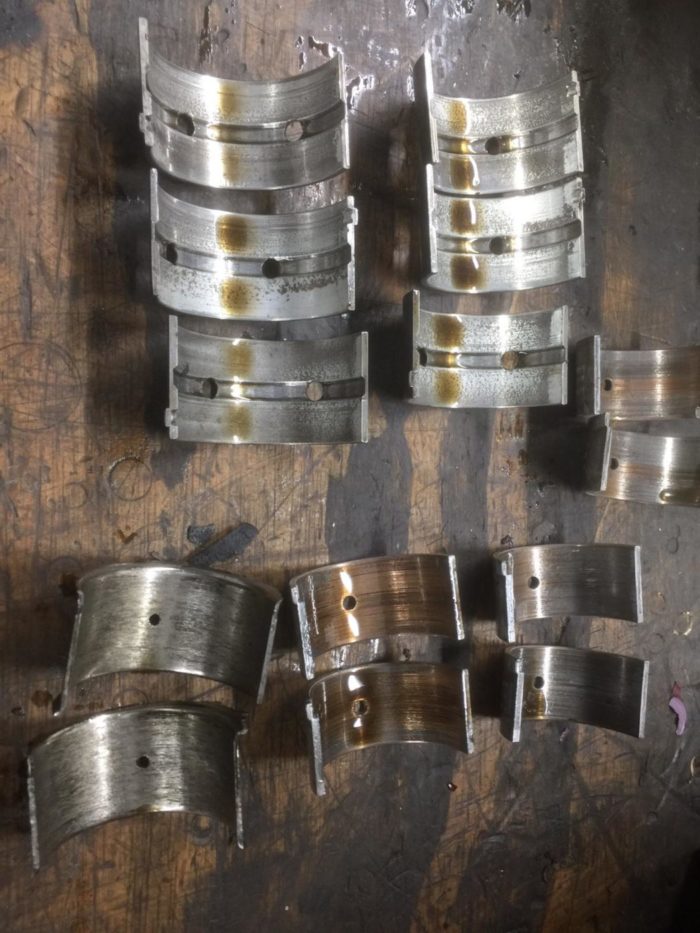
Our 1954 Jaguar MKVII has most recently been masked, primed and had a guide coat put over the top to guide Chris and Matt when smoothing the panels. The bonnet has already been painted in the original paint and sets as a good guide for how the rest of the vehicle will look.
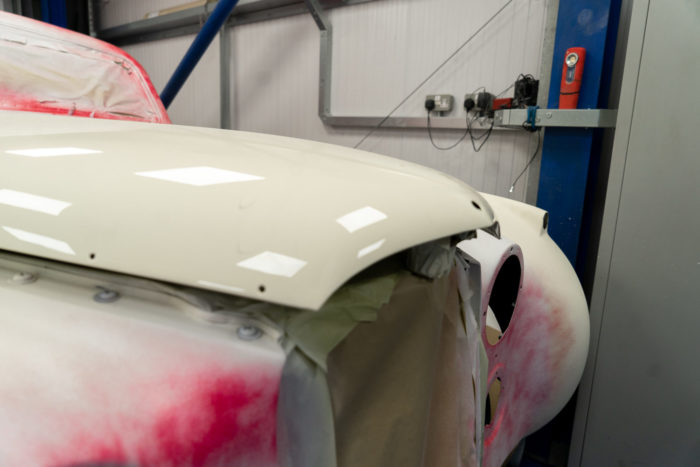

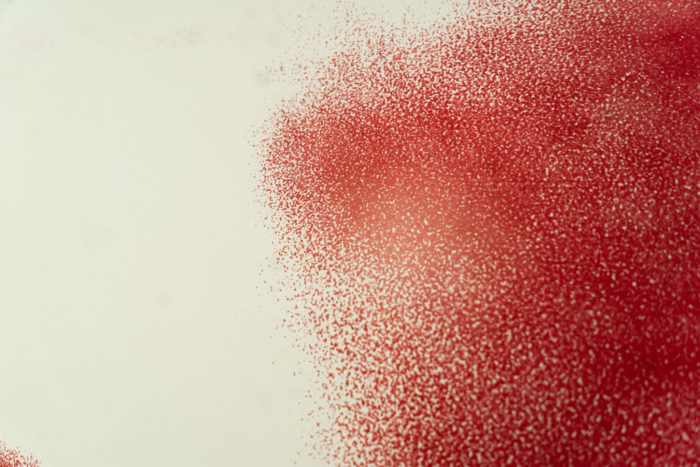
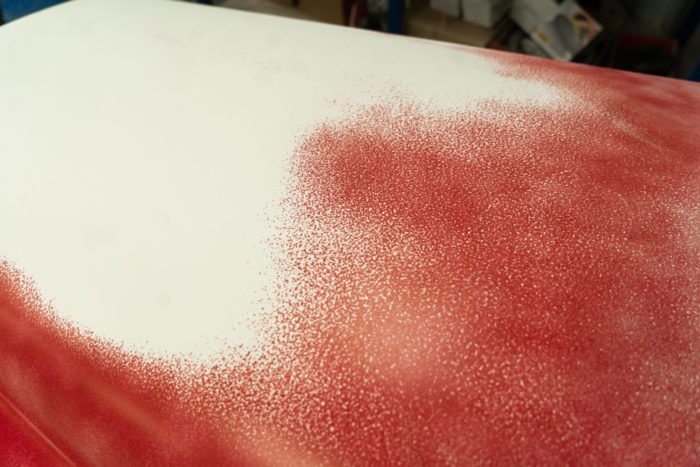
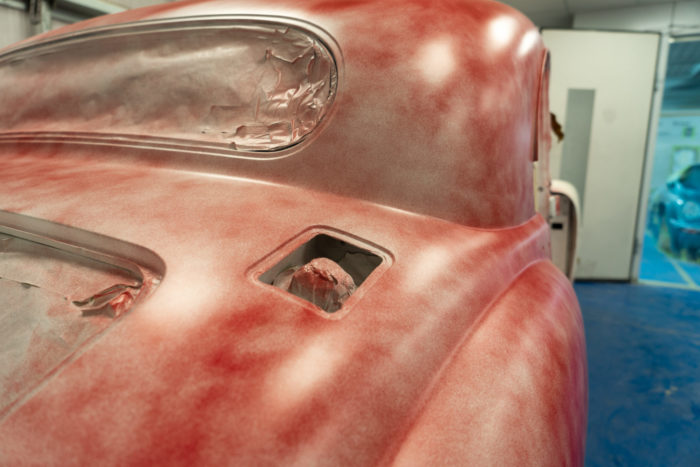
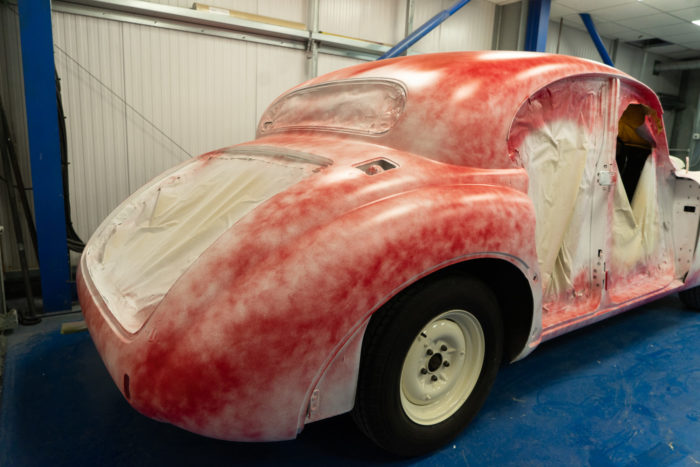
The doors were prepared ready for primer. The preparation includes making sure the surfaces are clean and the components are masked up. The primer was the applied by Chris.
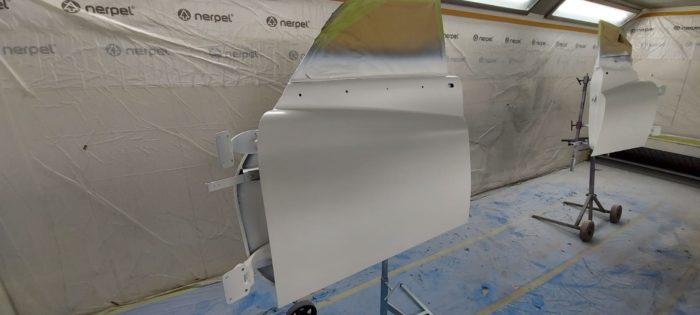
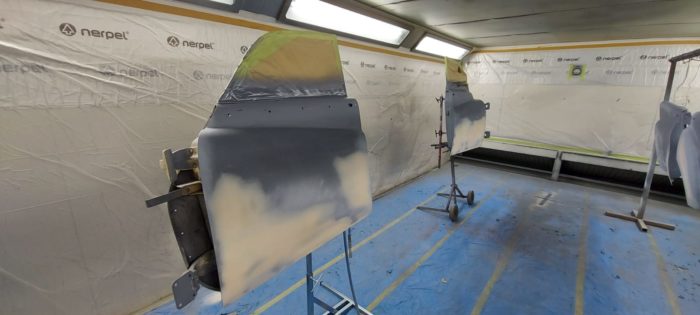

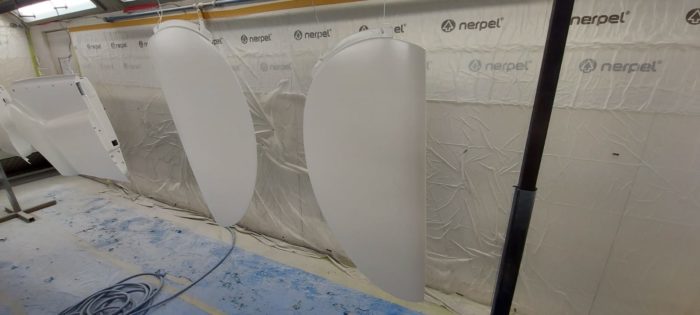

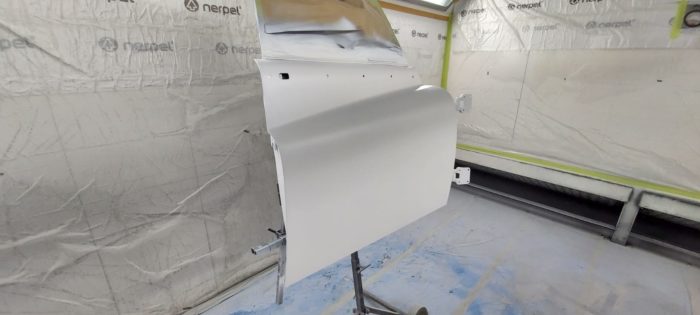
Before the MKVII was able to go to the paint bay, James had to add some fabrication to correct some spots of rust and corrosion. The right hand rear quarter panel just behind rear arch was showing some signs of corrosion so James cut out the rust from both the inside and outside layers and then fabricated replacements which he welded in.

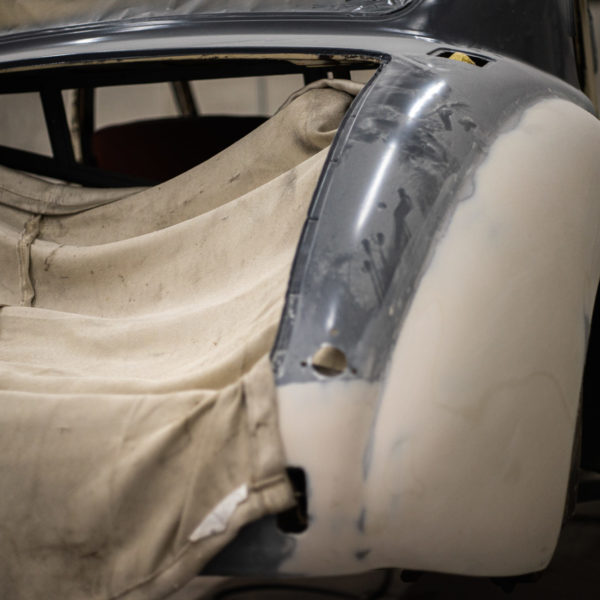
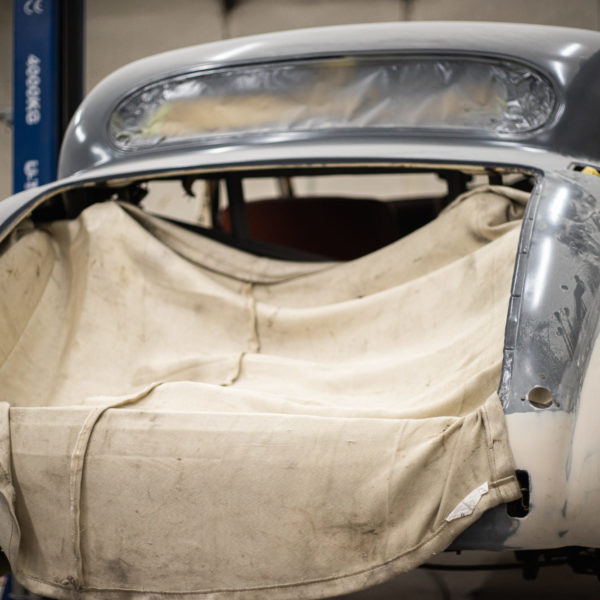
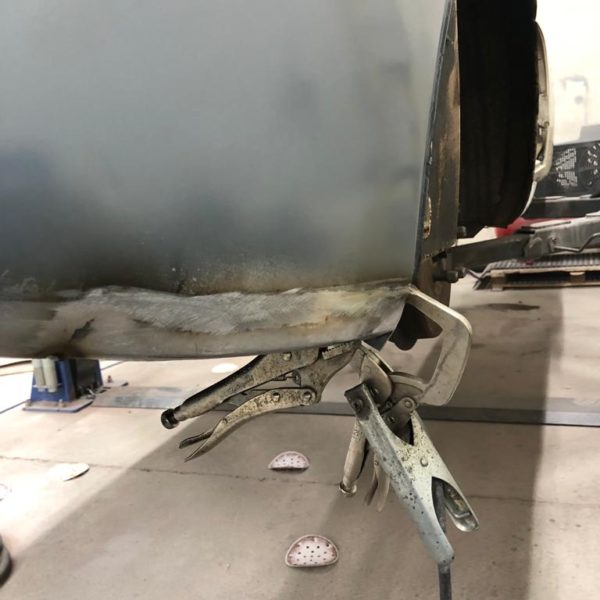
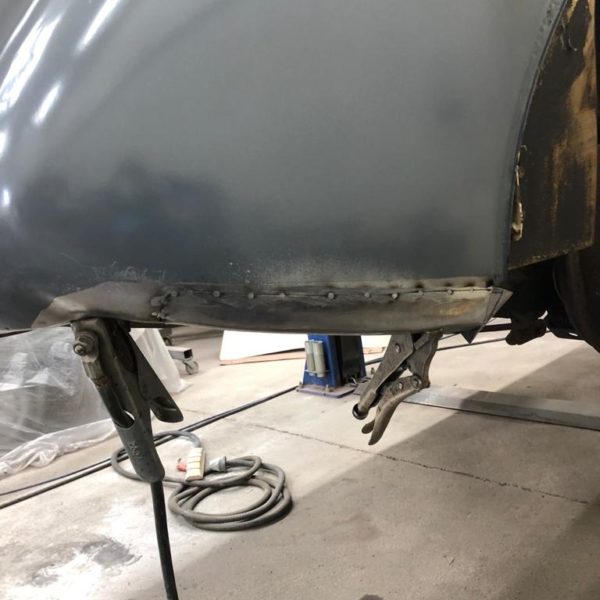
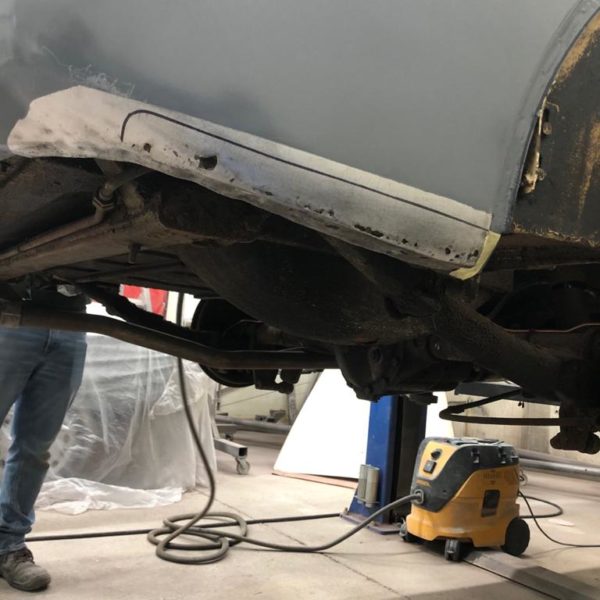
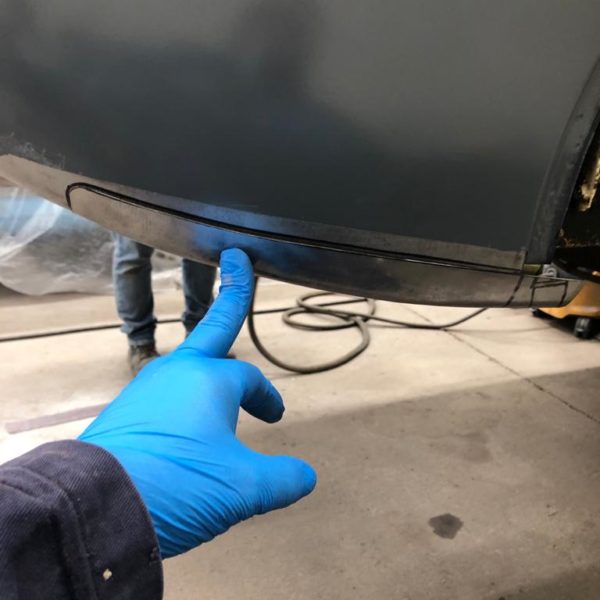
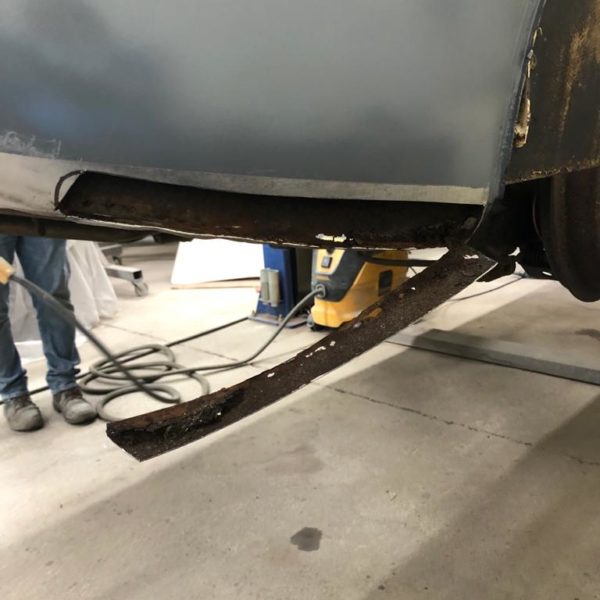

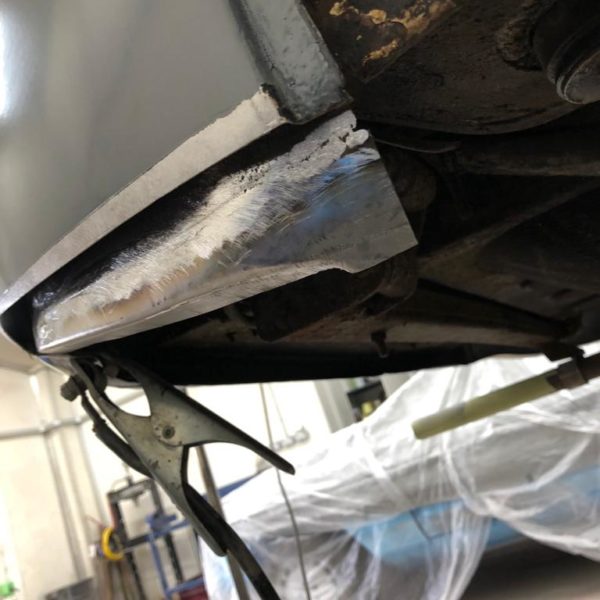
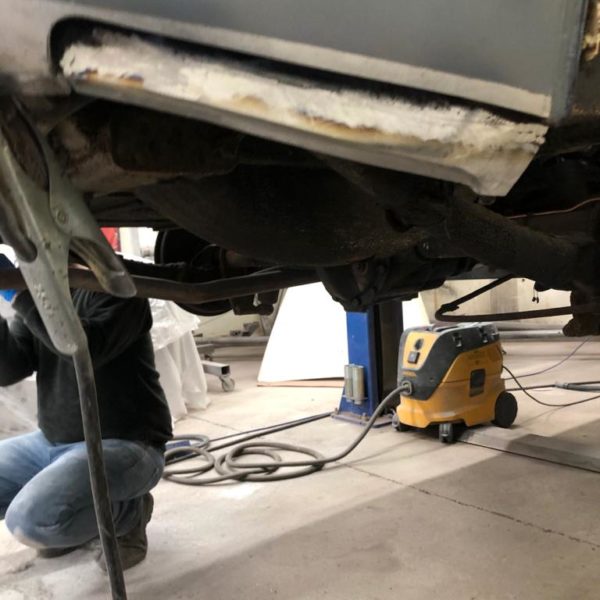
Our stunning green 1970 Series 2 4.2 had been completed and was in-fact on its way home with its owners when, just past the gate, the drivers seat broke. This is an area we hadn’t been working on as it wasnt requested but evidently was in need of some TLC. This is often the way with classic cars, bits break through usage and love but we always remind ourselves when things like this happen, that these cars have survived many decades until now!
We fabricated some new bolts and metal elements to fix the broken nut in the chair runner so that the seat now functions good as new!
Paul and Tom have been working on the Peony Red Jensen 541R today, both fitting more chrome to the body and fixing in place the underside bonnet clips.
Paul has been steadily getting through all the chrome pieces, fitting them to the body and ensuring they all sit perfectly. Tom has been fixing in place the clips which hold in place the bonnet rods and hinges that allow the bonnet to open.
Tom has also assembled the dash, fitted the boot and bonnet as well as fitting the indicators and chrome.


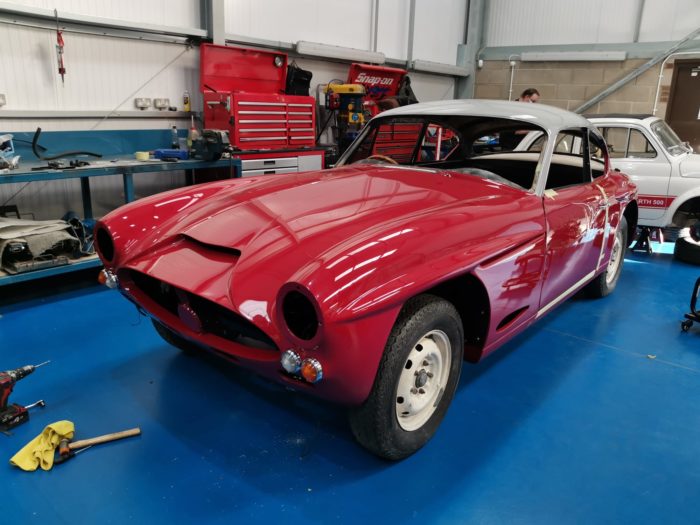

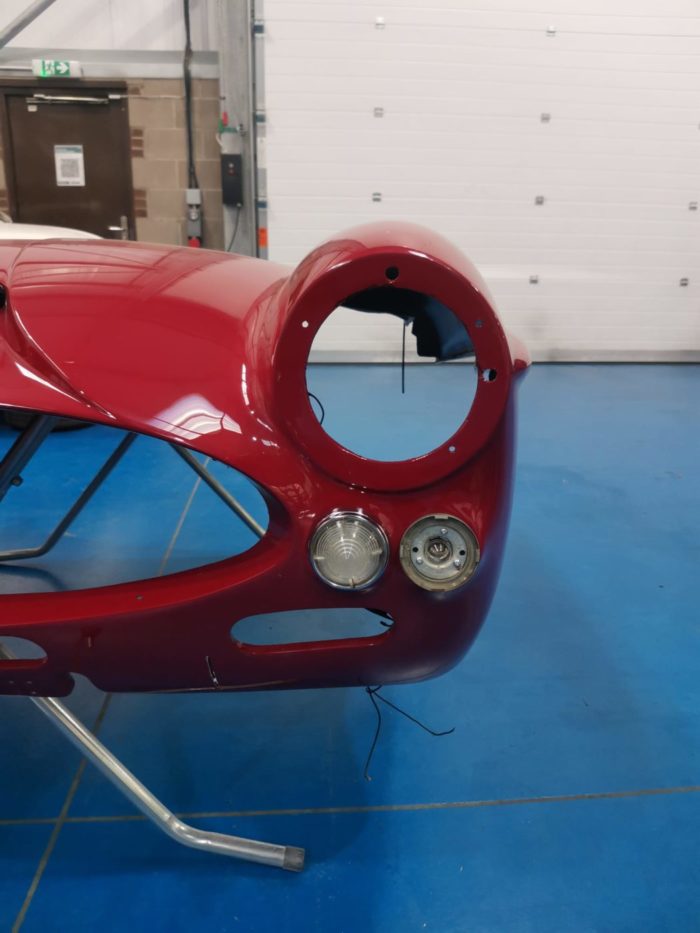
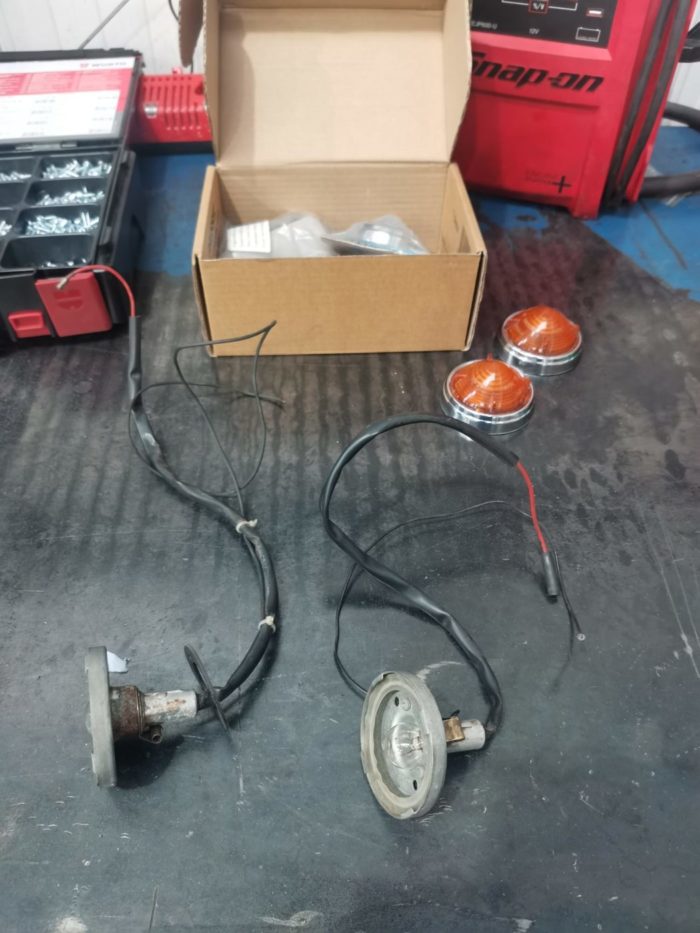

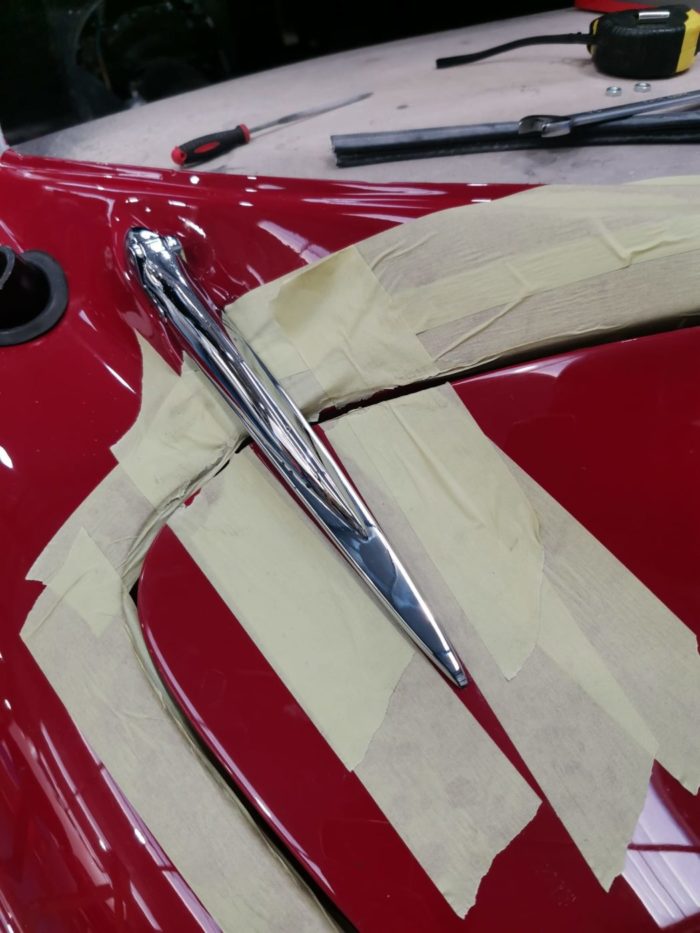

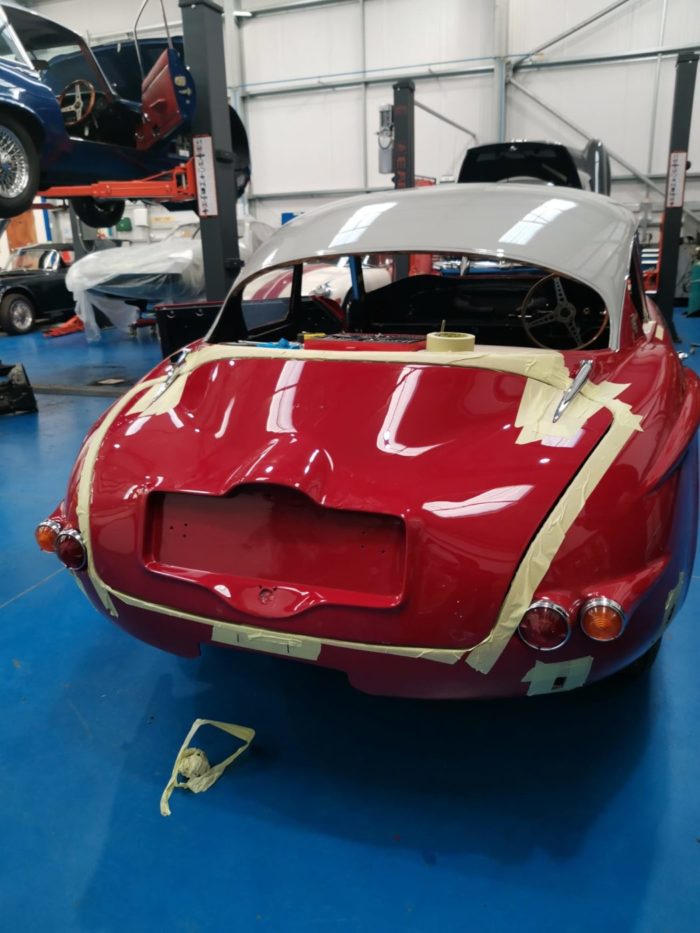
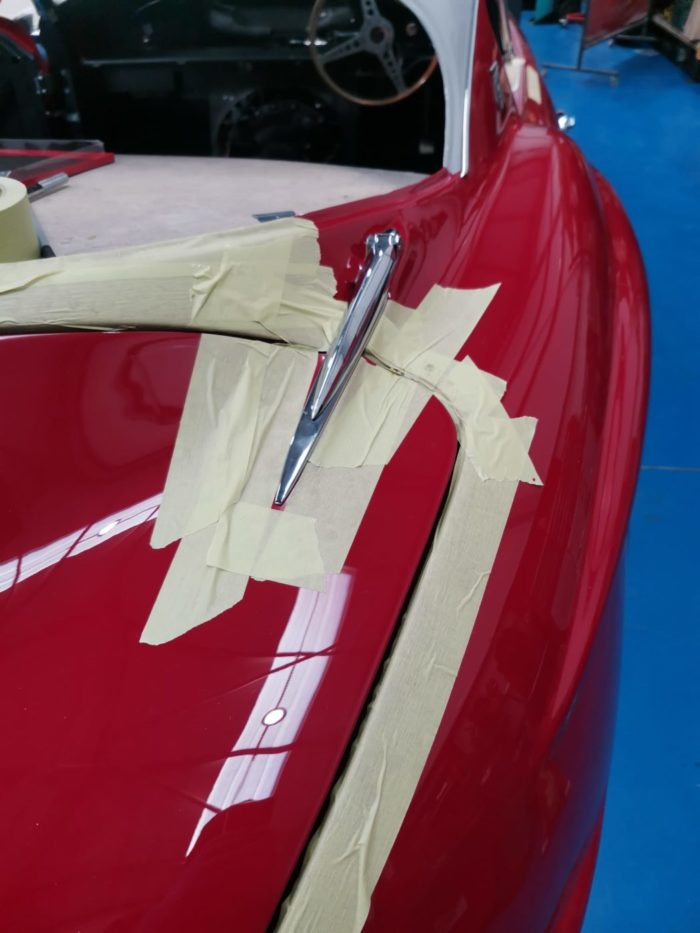

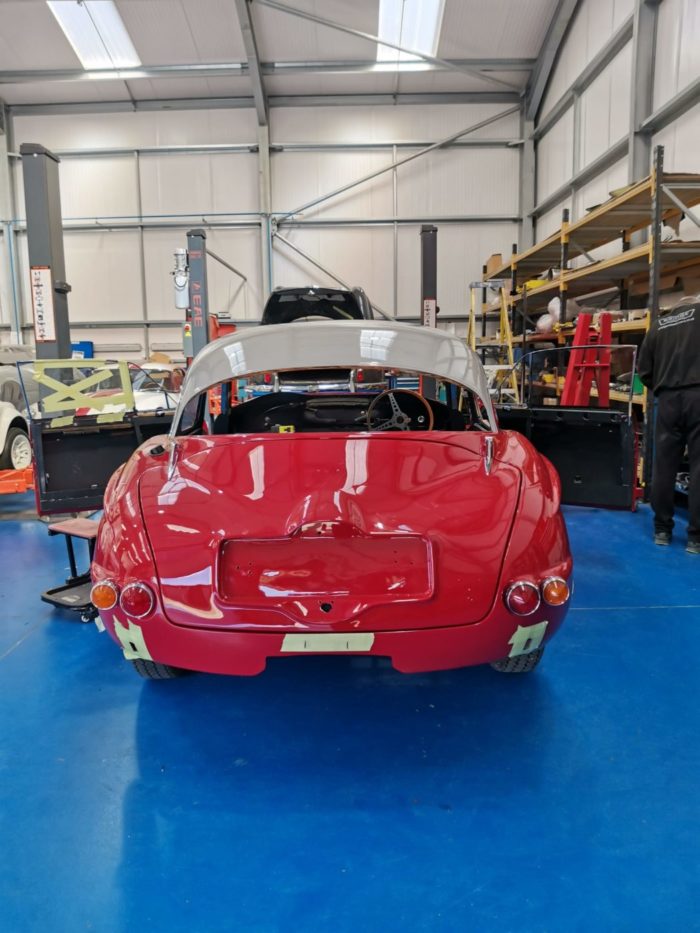
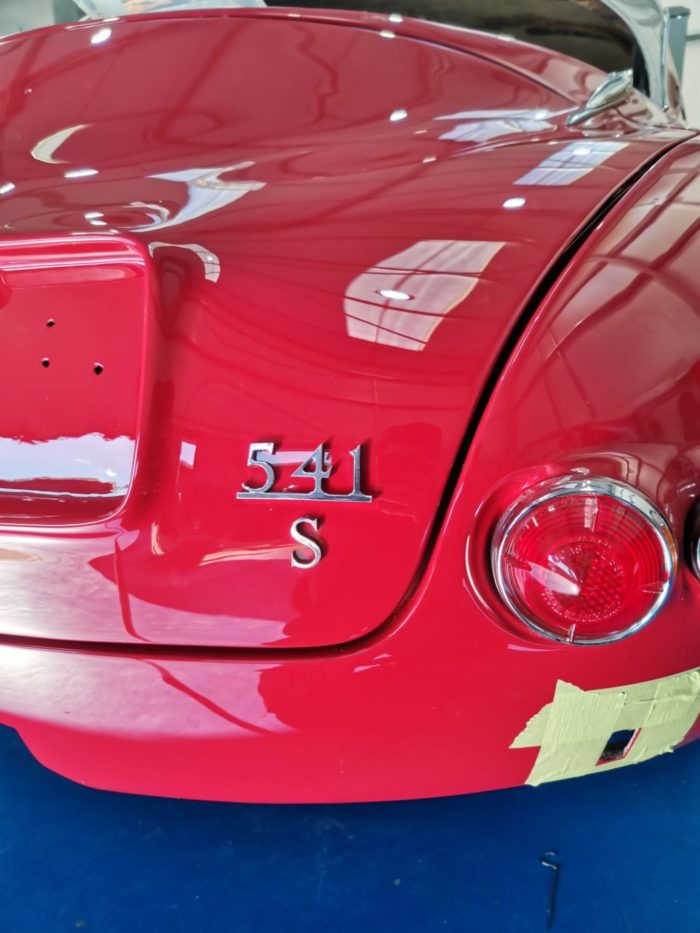
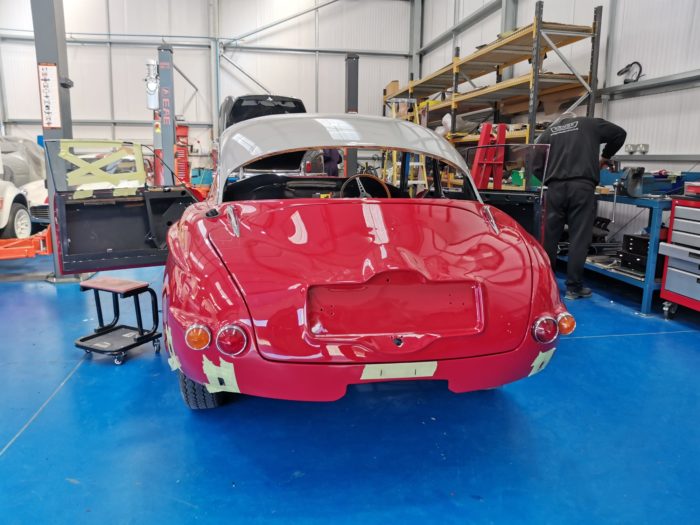
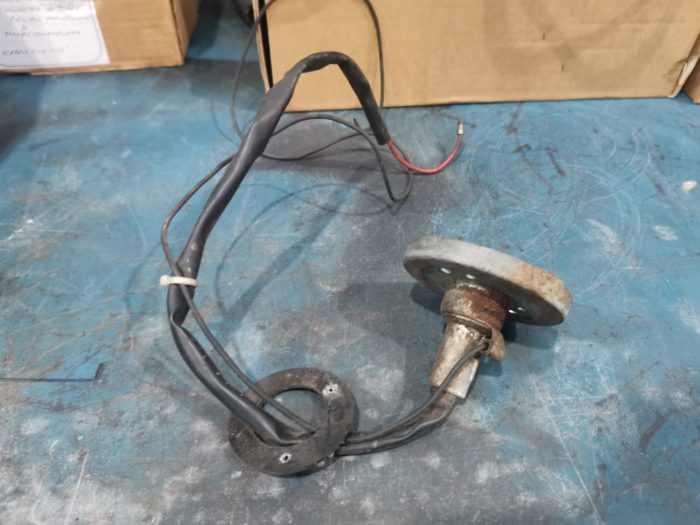
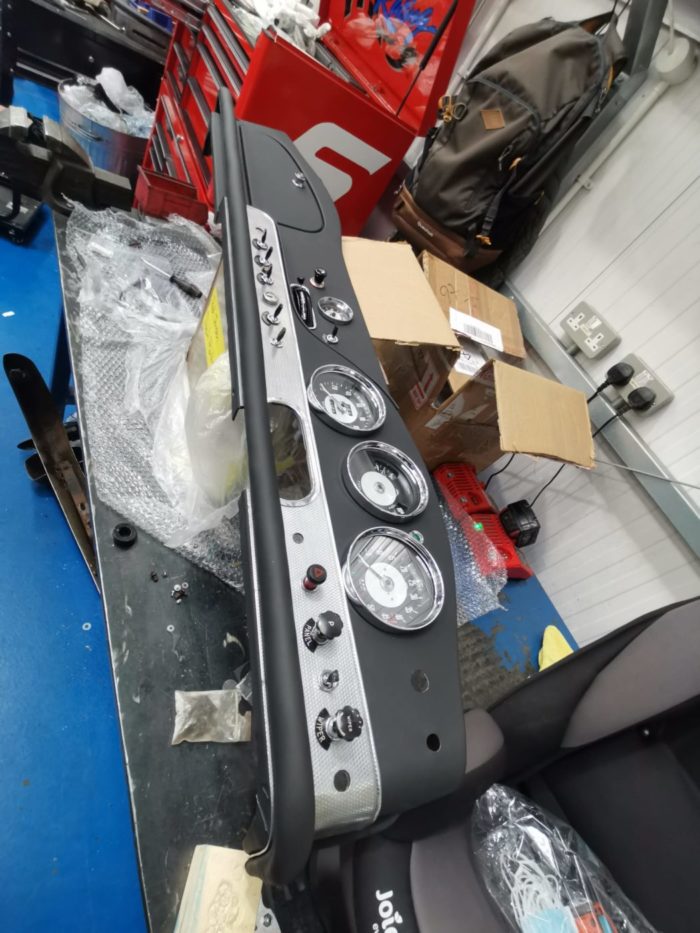
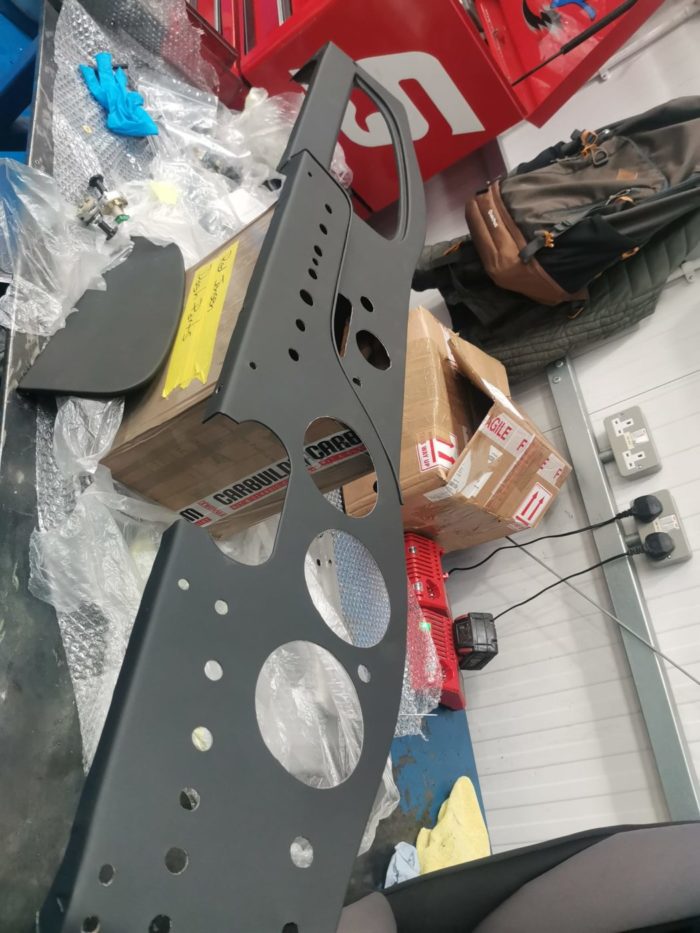

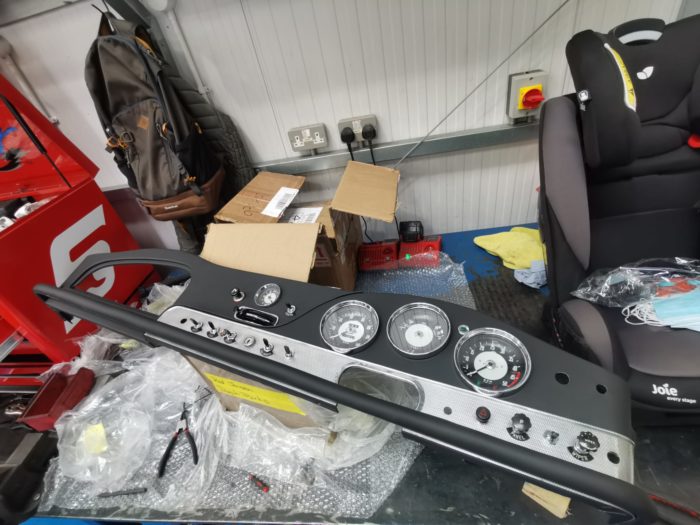
The rear axel has now been fitted back in our 1968 Jaguar E-Type Series 1.5. Mauro has been working to replace the seals and rebuild the rear axel so that it doesn’t cause any more issues.
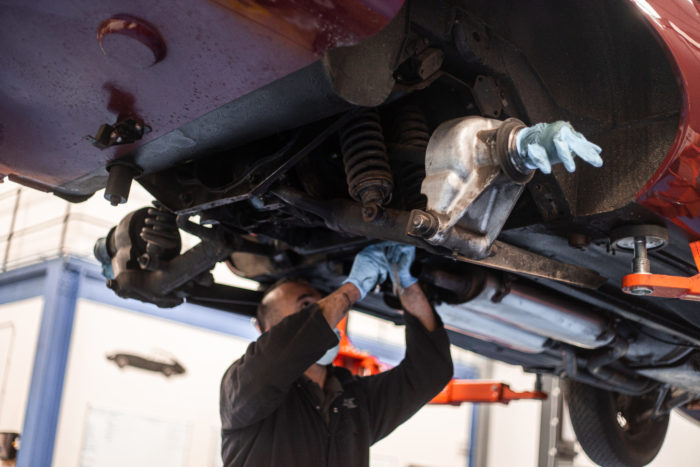
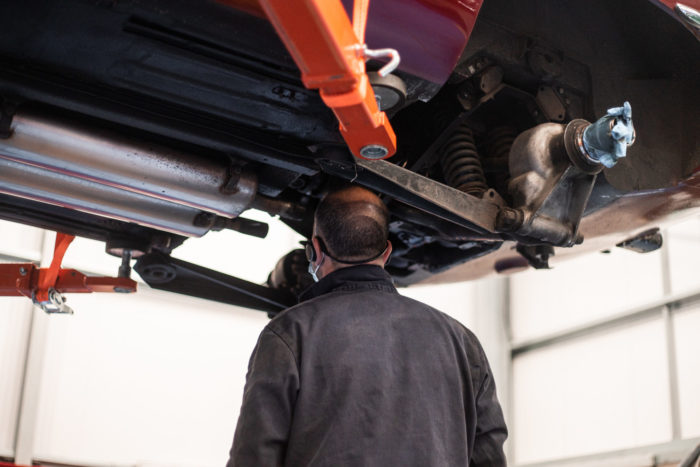

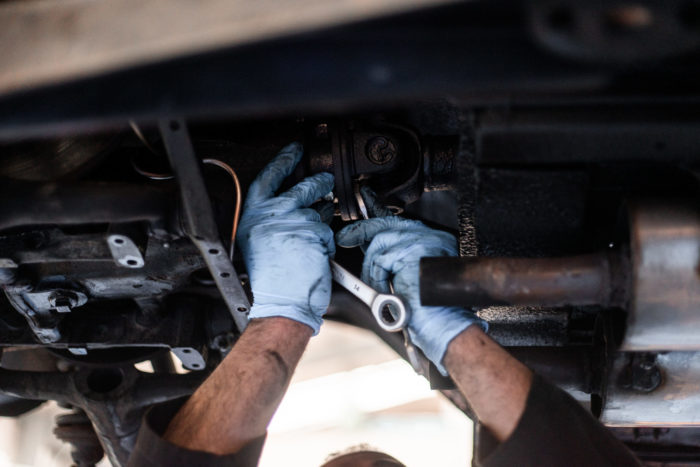
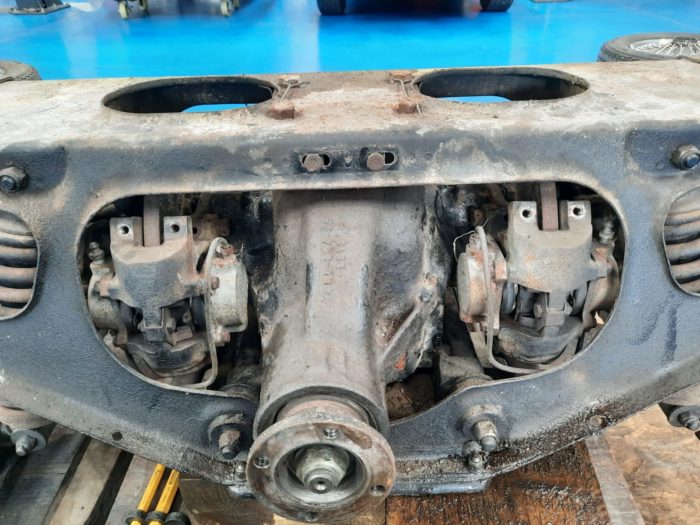


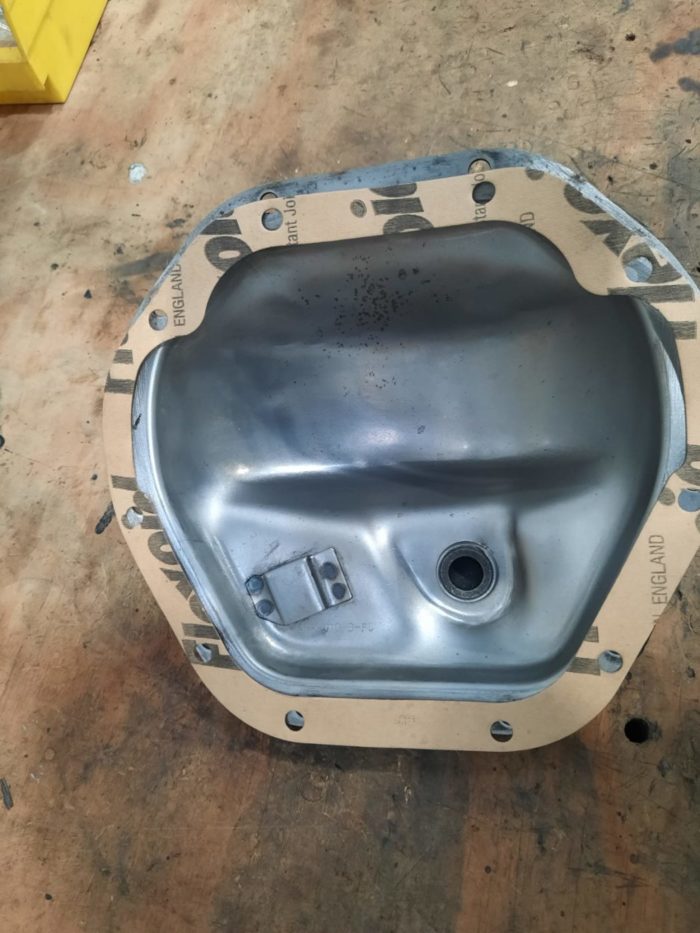
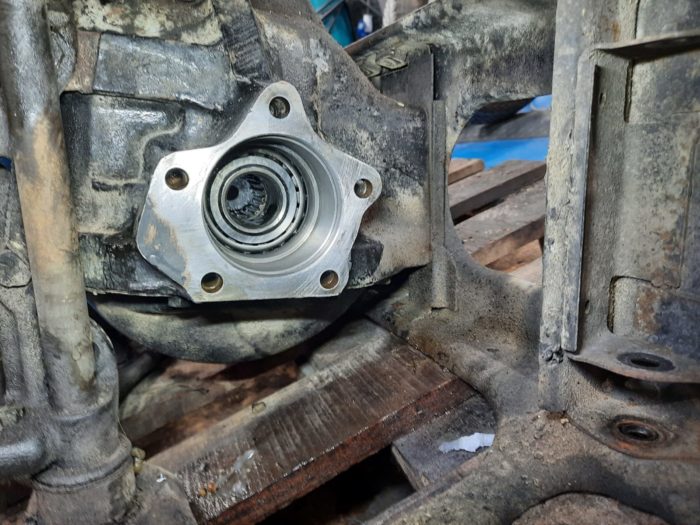


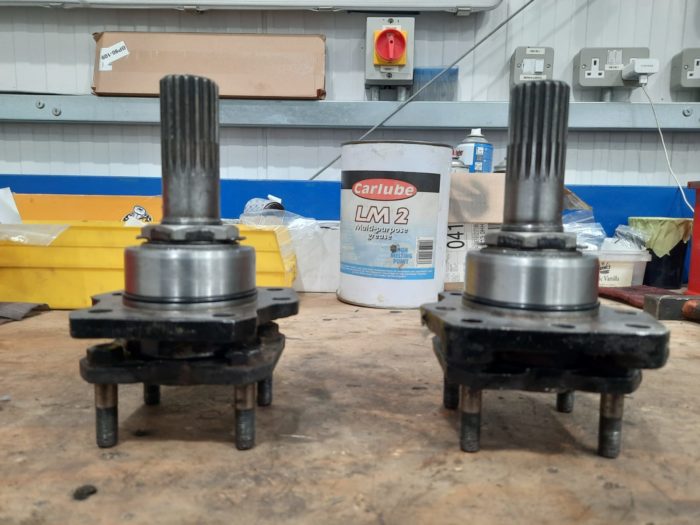
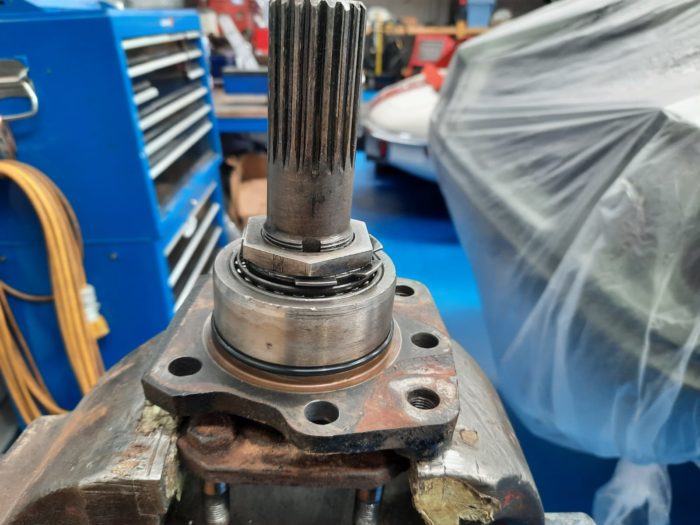
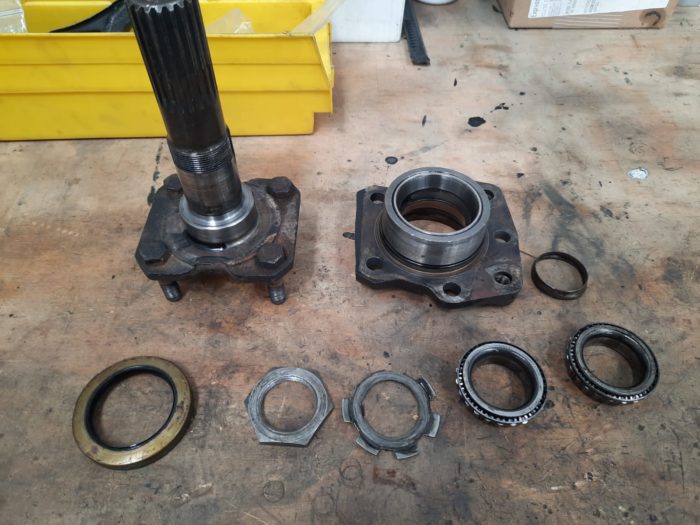

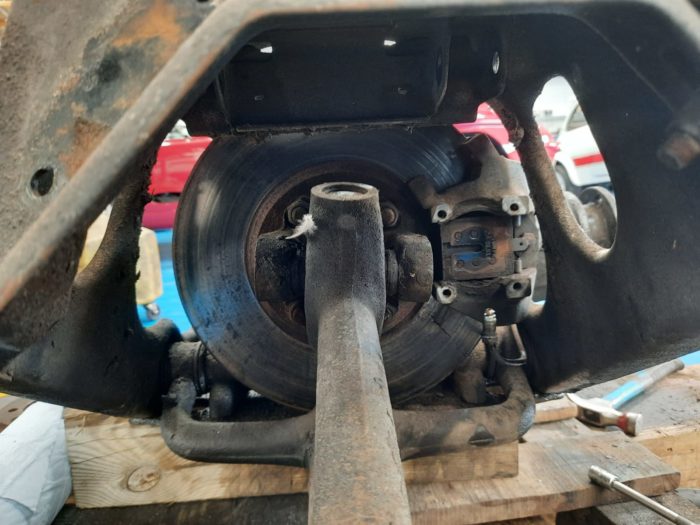

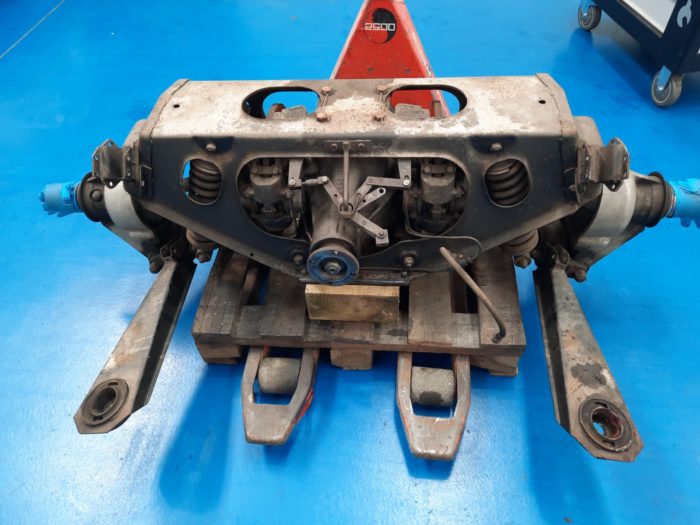
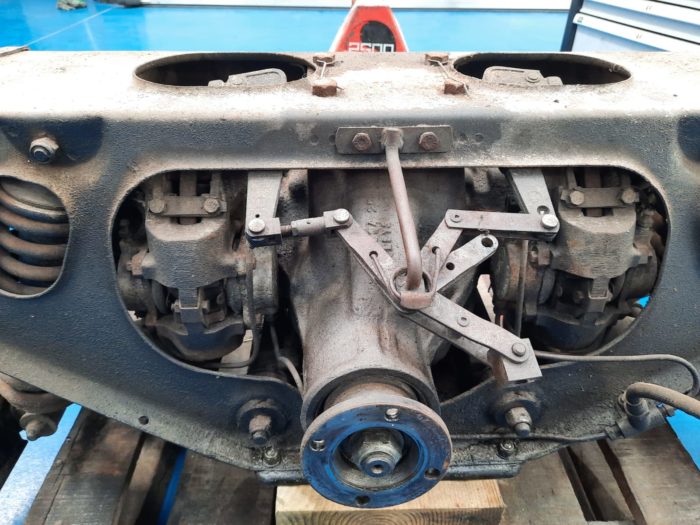
Our blue E-Type has had a new lightweight clutch and flywheel fitted after its old one was showing serious signs of wear and had become dangerous. The old thrust bearing, rear oil seal and fly wheel pictured below shows how desperately they all needed renewing. The new flywheel is more responsive, being made from lighter aluminium with a steel insert for the clutch plate.
Last night we hosted our live draw where we announced the winners of our Morris Minor and Triumph Stag, congratulations to Matthew and Gamal.
It was our first live show working alongside local production company, Bruzier.
As we look to continually improve on our live streams, we endeavour to create exciting and interactive content.
Soon we hope to open our doors so that many of you can join us in our productions.
Extra cameras, microphones, and the new large display all help make the experience from watching at home more exciting. But of course week 1 comes with its teething problems.
With the launch of three exciting minis, we hope you can join us for the next one.
Congratulations to Matthew Sudgen who won our 1949 Morris Minor MM Lowlight with ticket number 25 and to Gamal Zindani who won our 1971 Triumph Stag with ticket number 1047!
With all three minis individually shot, it only left the finale: Bridge Classic Cars does the Italian Job. Directed, shot and produced by our marketing and visual gurus, Ellie and Freddie. The team got together Craig, Hannah and Charlotte with their minis to film a quirky and enthusiastic video for our big reveal. Co-ordinating all three mini’s on the runway for each shot took a few attempts but after an hour or so, we managed to get together enough frames for our reveal video which aired last night on our live draw.
With each mini and driver taking turns in the spotlight, driving stunts were choreographed to allow for each mini and driver to be clearly seen whilst still keeping the quirky personality of the classics.
After the video was shot, we lined up the cars and their drivers for some photos before heading back to the hanger and settling down for an editing marathon.
We took our 1996 Mini Cooper 1.3 over to Bentwaters for its photoshoot. We were lucky with the good weather and bright sun for our photos and videos. As usual, the team split in two with Freddie handling the videos and Ellie shooting the photos. Craig and Charlotte later joined to be our faces and drivers for this mini.
Charlotte came to help out for this shoot and sat for some portraits to create some more lifestyle photos for this characterful classic.
We headed out to Bentwaters to shoot our classic 1969 Mini Deluxe, which is one of three of our most recent mini madness competition release. This mini in particular comes bursting with stories and personality including its own Mini World magazine feature, untouched fuel ration tokens are beautifully aged interior.

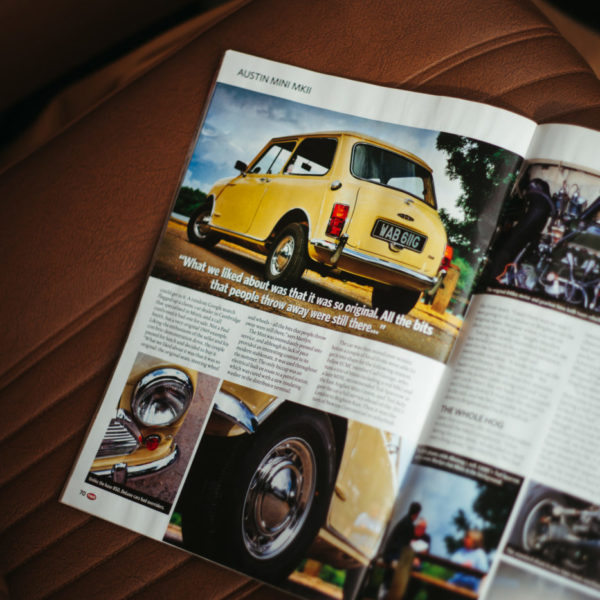
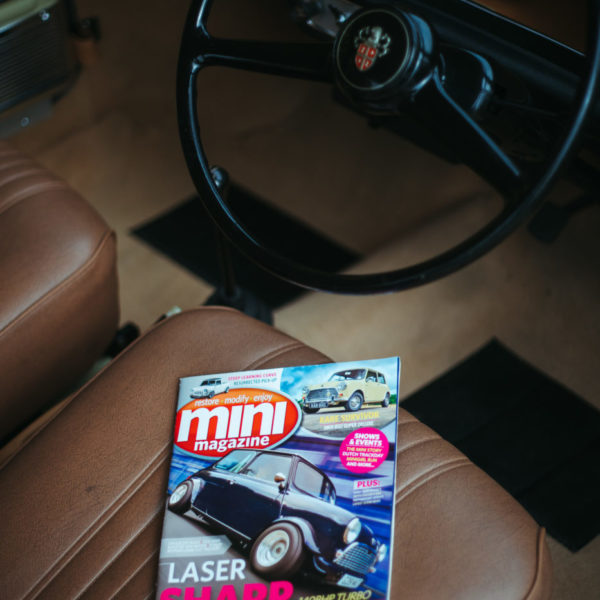
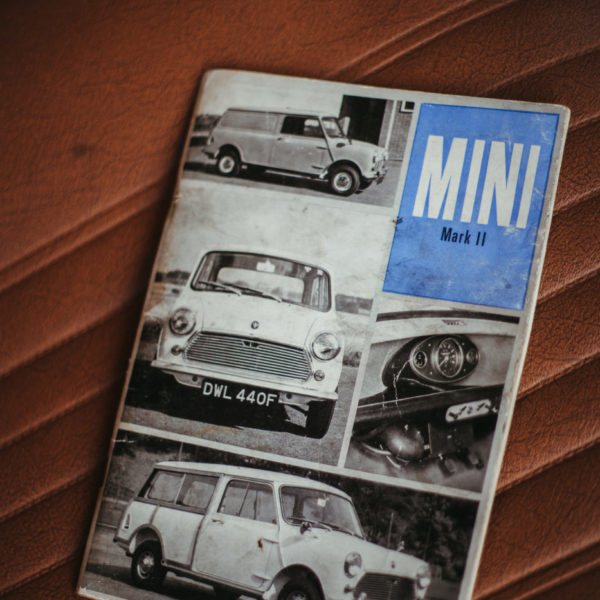
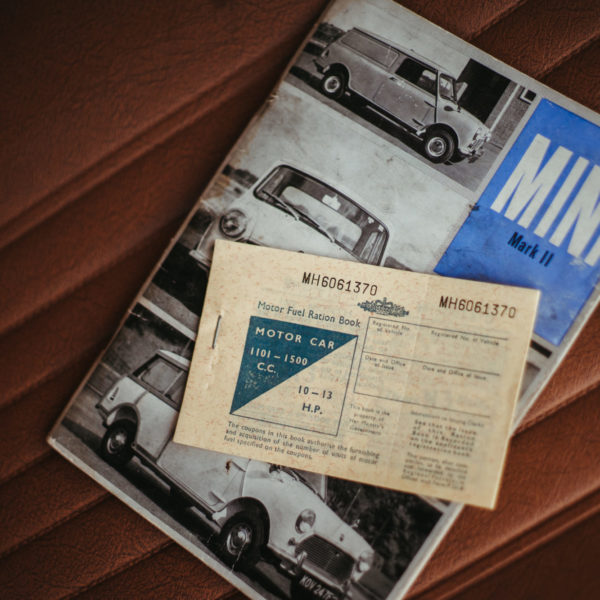
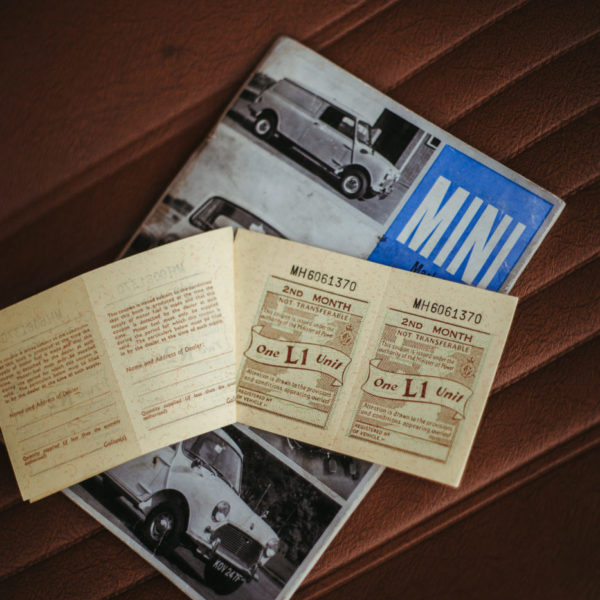
Charlotte came to help out with the driving and sat for some portraits and more editorial photos. We love having people involved with the cars as we find it brings the car to life, and with Charlotte being our talented presenter, she’s perfect to also sit in for photos and videos. Prior to each shoot Freddie and Ellie organise with Charlotte what she’s going to wear for each car to match the style, and how we’re going to pitch the visuals.
The log pile made for a great location to shoot this darling classic, as the tones of the mini match the timber perfectly.
Freddie shooting his videos for the mini:
We also get Charlotte to drive our cars around Bentwaters for Freddie to shoot his video. We’re lucky to have access to Bentwaters for our shoots and videos. We have a hanger here on base and find that Bentwaters provides a perfect selection of back drops.
Last week we ventured out with our friend and model, Hannah, to shoot our 1980 Mini 1275 GT, which you now know is one of three of our grand mini reveal. This characterful orange classic is not only fun to look at, but also fun to drive. For Hannah, it is her dream car, making her the ideal candidate to model and drive this competition car.
As usual, the team splits into two divisions with Freddie tackling the video aspects and Ellie taking on the photography. By splitting responsibilities and time like this, the team can swiftly get through multiple car shoots in a day, creating content for all our social media outlets.
As we usually do, we shot in RAF Bentwaters where we have a hanger. Driving up and down the 1.3 mile run way, we captured our videos and photos of this spritely orange classic.
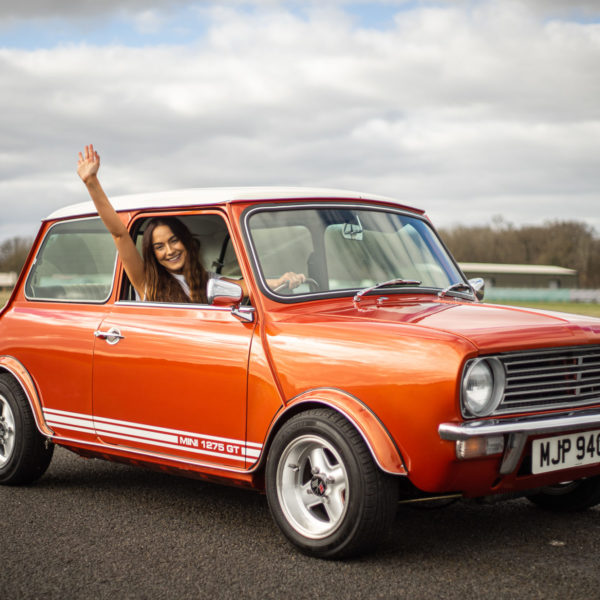




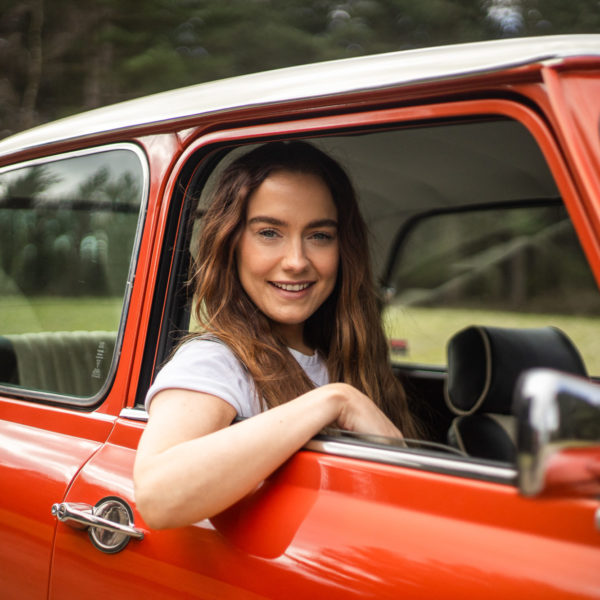



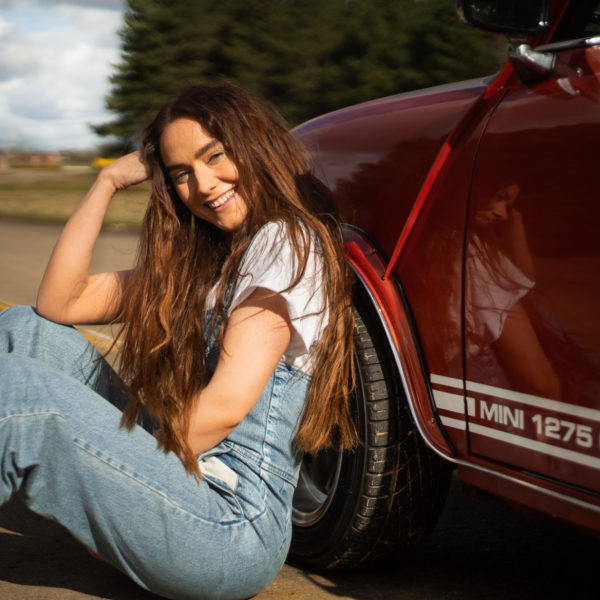
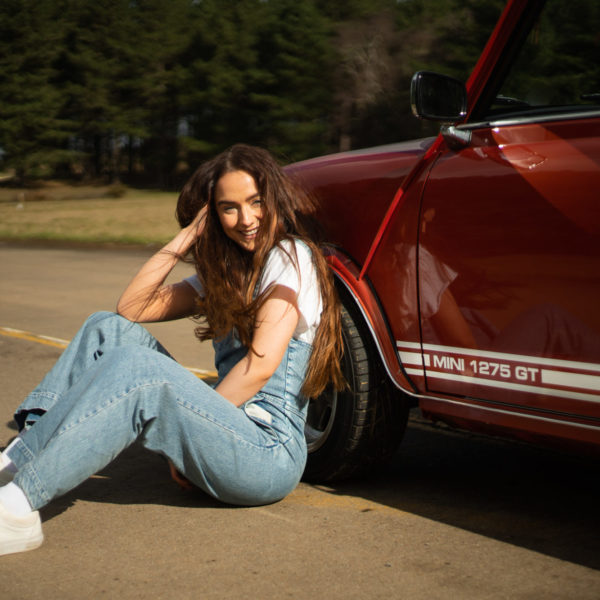
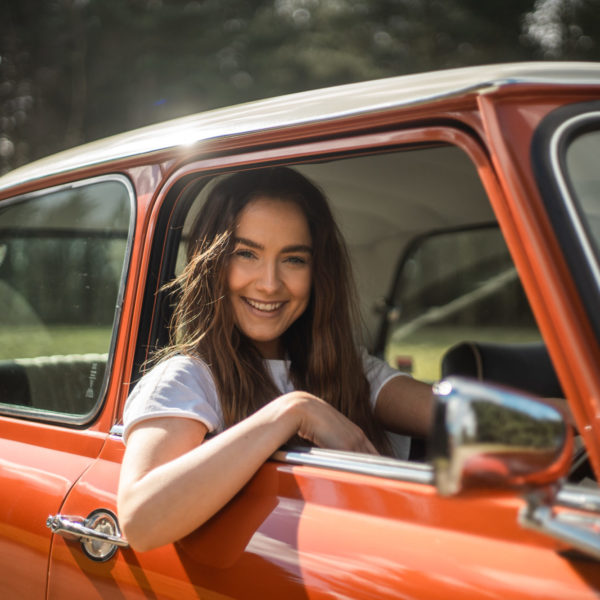

We were lucky to have fair weather on this shoot after the unlucky spell of bad weather recently which makes shooting cars in difficult.
We always aim to shoot multiple galleries of each car, including the main product photos you see, the portraits and motion ones, but where we can, we also like to pick a second destination to shoot in to create a wider diversity of photos.
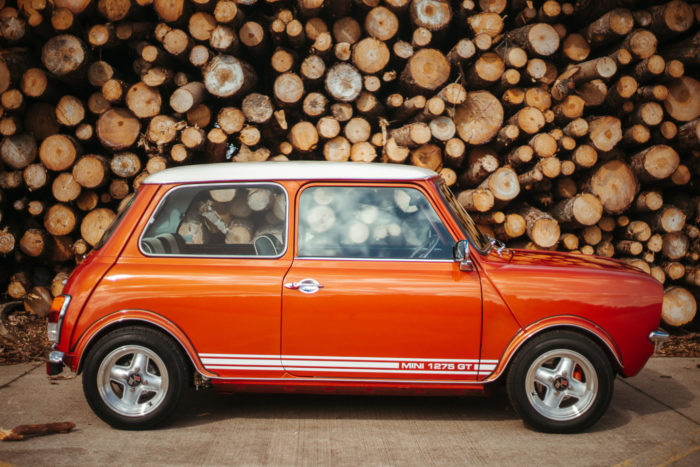
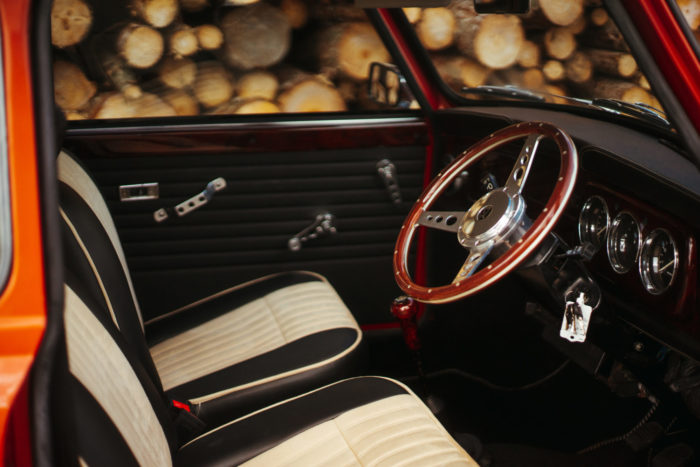

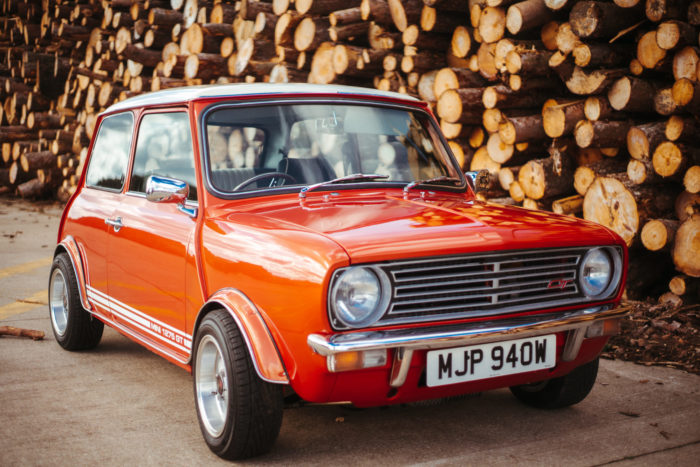



Our charming Austin Nippy has its engine back in which we’re delighted to see. Ady re-linked and re-fitted the engine back in to make sure it now starts fine.
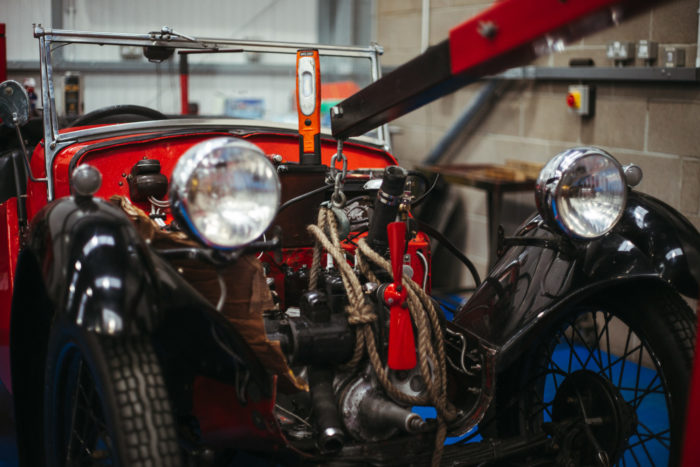


Ady has found that there was water leaking out of the side of the cylinder head so he has fitted a new cylinder head to go back on with a new copper head gasket. His next step will be to take it for a test drive.
Ady has continued working on our 1960 MGA buy removing the cylinder head in his endeavour to fix the issue with the engine.
Our company van has been serviced and refurbished so it’s now running smoothly. We’re currently awaiting new graphics to be designed and applied, which we’re excited to see when finished. The graphics are likely to be similar to our lorry.
During testing we established a fault in the steering however we have since rectified the fault.
Due to the Corvette engine, the manifold previously went over the bell housing however when we removed the exhaust to gain access to fit a new modified oil pipe, we changed the manifold to go under the bell housing.
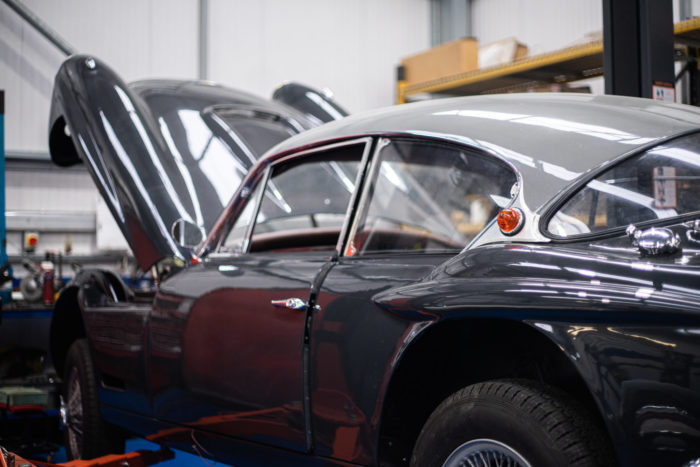
Scott has been taking out the heater in our Ferrari Daytona so that it can be re-wired and refurbished.
The trim restoration for our Daytona continues with Brian taking off any extra leather around the skirt of the seat, adding in eyelets for the headrest and pulling the leather over the side of the base onto the back. Lydia has been marking out and cutting new pieces of foam to glue onto the “inner” frame and glueing the foam in place and adding more foam padding to fill out the frame. Lydia has also pulled the cover over the frame and foam and glued the sides into place. She started with the calico strips that run around the edge, she then pulled it tight to get the shape of the seat. Once the seat frames were completed, she fitted the backboard and inner section into place.
Lydia also sanded down and re-covered the sills recently and then glued on new foam and leather.
The engine bay, bonnet, boot and wings have also been masked and painted, meaning that the exterior is now finished.
After having sourced this vehicle last year, it’s been sat in storage whilst we’ve worked on two other classics belonging to the same client. Now it’s time for this Californian dream to be restored. With a big re-design coming it’s way, the first step is to dismantle the E-Type. By removing the chrome, trim and lights, our technicians can start working on parts of the car.
The compression test also came back positive, with all the readings as they should. A compression test gives you an indication of the health of your engine, its valves, valve seats, piston rings and whether these parts are wearing evenly.
The tests should show the compressions at 110-115 psi. The test shows how much volume of air and fuel goes into the combustion chamber. If there’s not enough, for example, if only 80 psi were passing through, it would give you an indication of a serious fault in the valves. If the valves aren’t seating correctly, the air and fuel can seep out of the cylinders and lead to more serious faults.
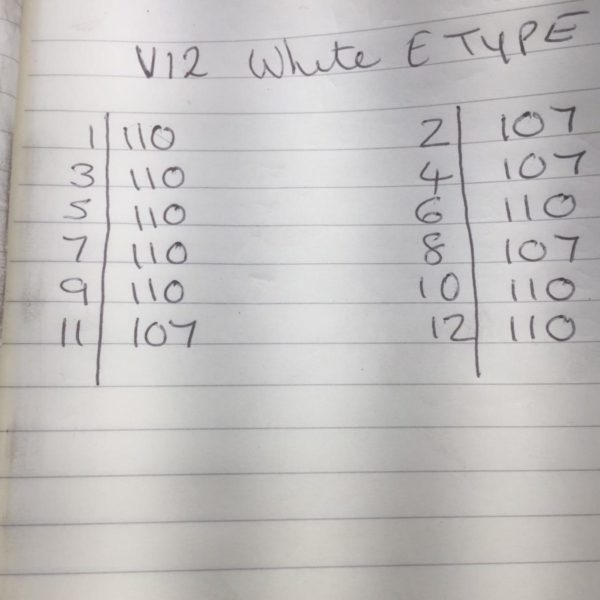
This 1953 Francis Barnet Rigid Body motorbike was delivered to us yesterday. For those with keen ears, you may have heard Craig mention an upcoming bike to the competitions. Stay tuned to find out where this bike is heading.
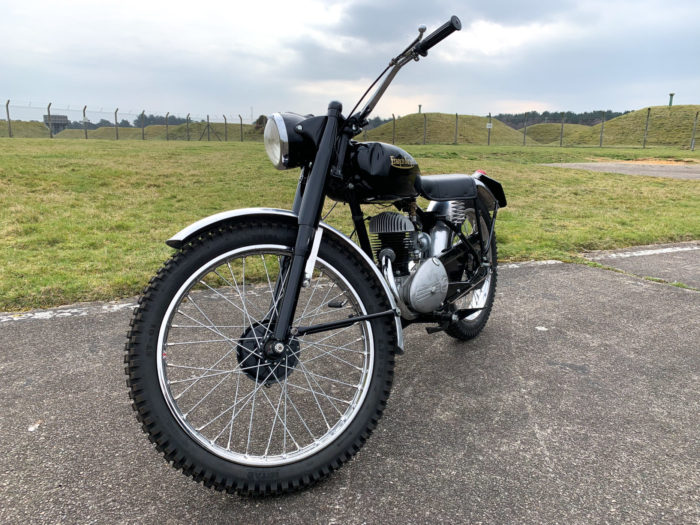
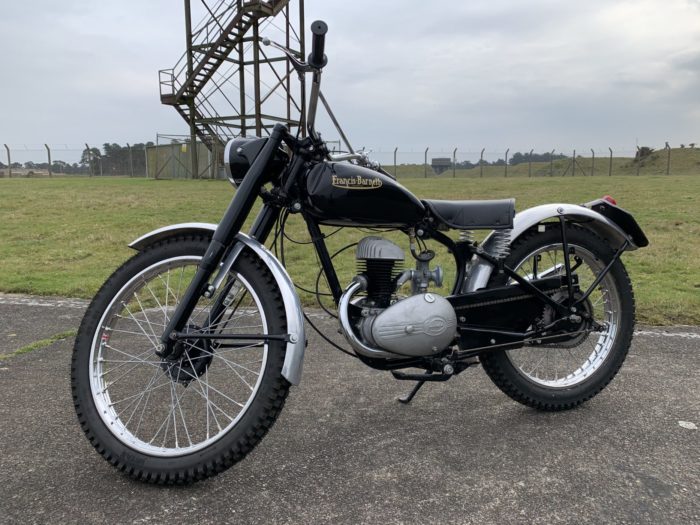
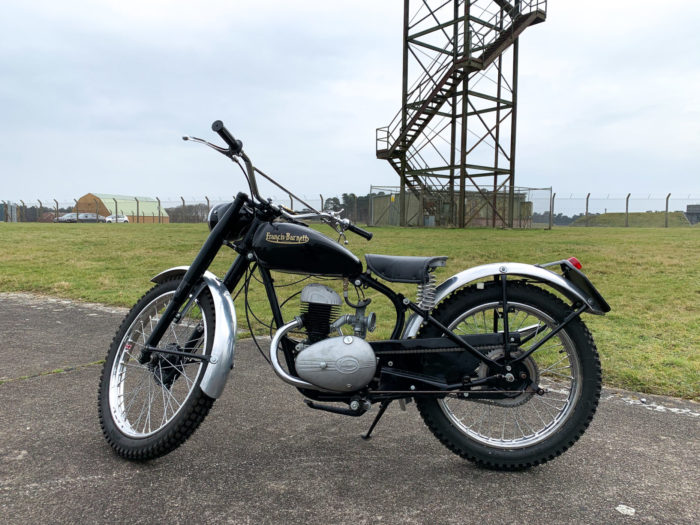
Although Craig managed to briefly start it up, it needs some attention to get it running smoothly. It currently has ten-year-old fuel sat in the tank that needs replacing and the electrics need a small amount of re-wiring. Other than these small amends, it’s good to go!

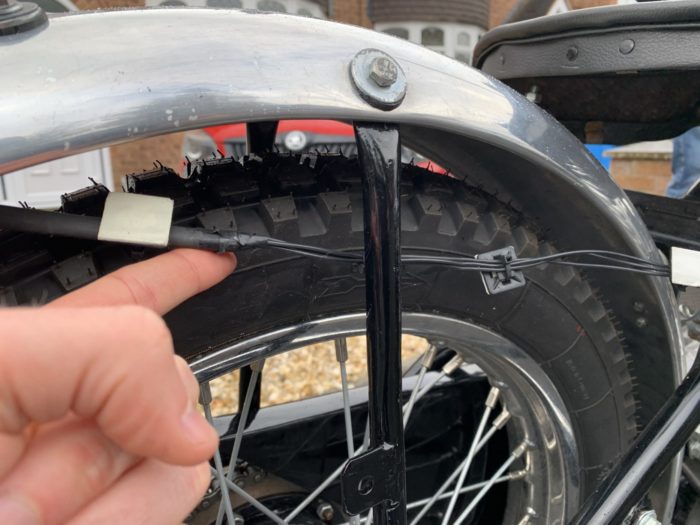
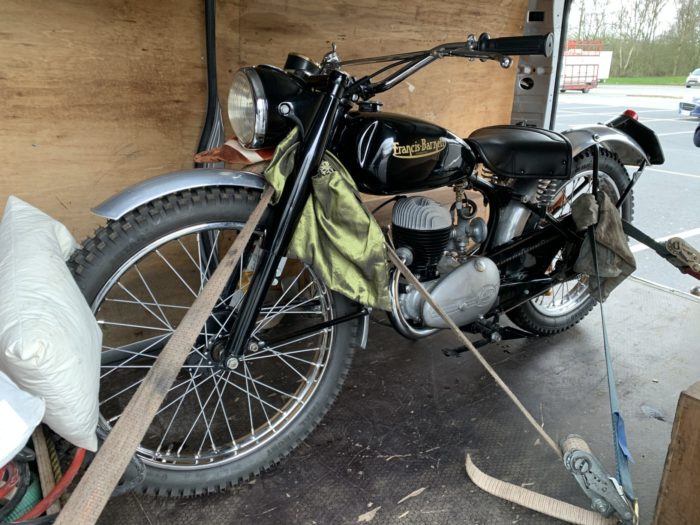
We’ve got some seriously tiny cars in the workshop at the moment. They may be small but they are…or will be, mighty. On the whole, many classic cars are smaller than what’re we’re now used to. Thanks to a series of design decisions or simply just smaller engines, some of the early classics were manufactured almost half the size of modern-day cars. The Fiat 500 was designed for tight Italian roads, the Austin nippy was only a few steps after the horse and carriage and powered by a small engine, and the BMW Isetta bubble car coming in at only 2.3m long and 1.4m wide, was an engineering vision into the future of solo city travel. A design that never really took off and stayed firmly placed in the 60s and 70s, but none the less has made them desirable collectables today.
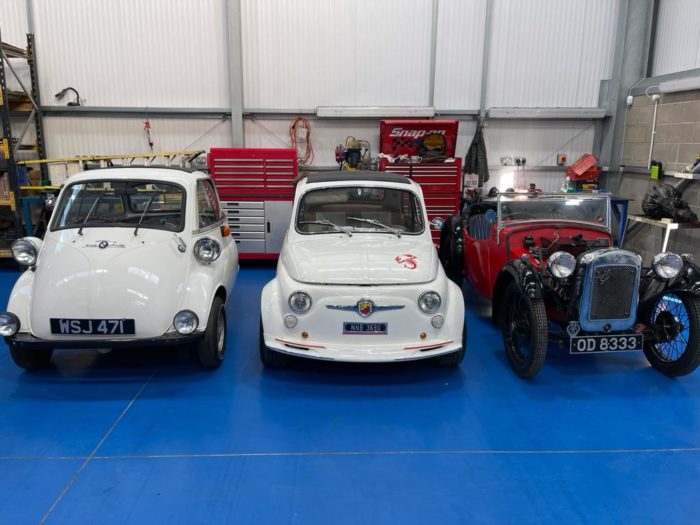


We’ve recently received a slightly worse for wear Isetta Bubble Car. With only the shell and chassis intact, we are in talks with the owner over how he wants this restoration to be managed.
There’s also been a small orange truck parked up by the ramp, which after thorough inspection and service is ready to go back to its owner, Loick Ranson. This little motor belongs to Craig’s 4-year-old son called Loick.
We had a rather unusual delivery on Friday evening. The trailer pulled up as the afternoon light cast a golden haze over the workshop, and with it, came this unique classic…
This bubble car, unlike the other, is in pristine condition. Gordon has even taken it for a drive! Stay tuned to find out what we have in store for this classic Isetta.
Bridge Classic Cars are award winning Classic Car Restoration and Maintenance specialists. Your pride and joy is in safe hands with our expert Classic Car Technicians. Take a look at our awards here.